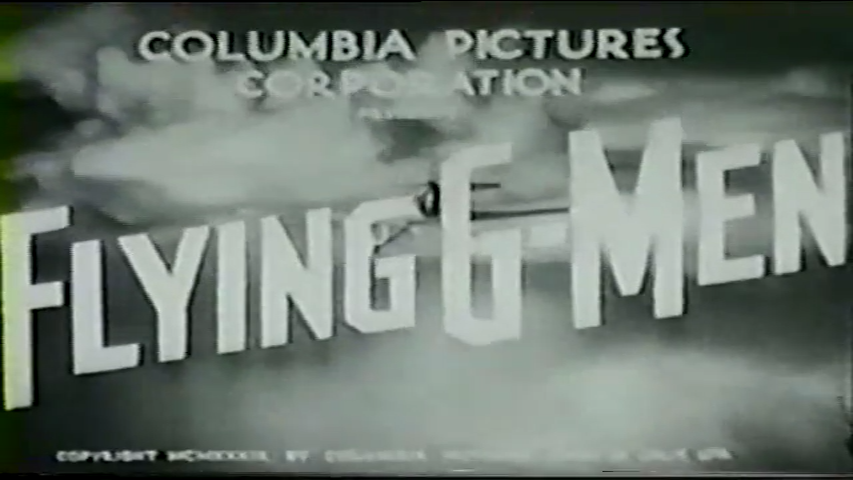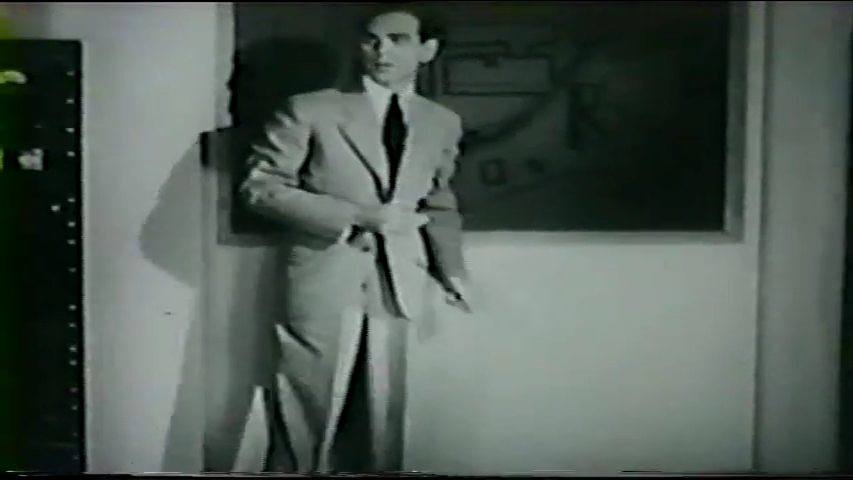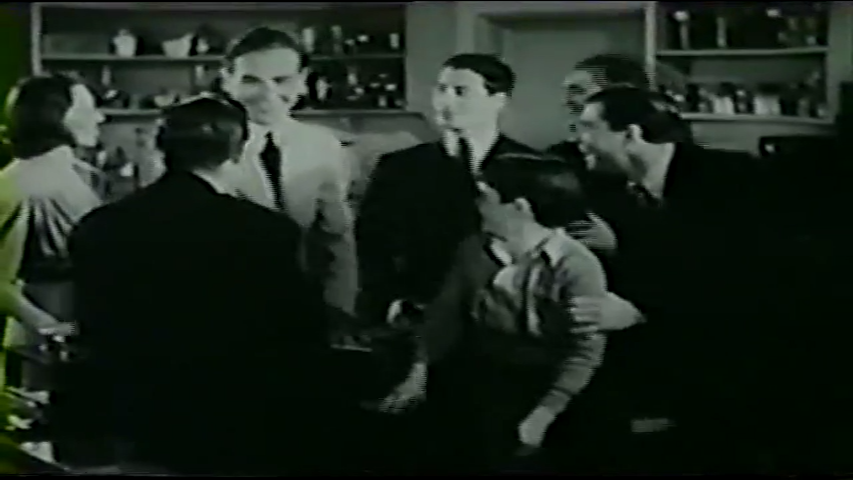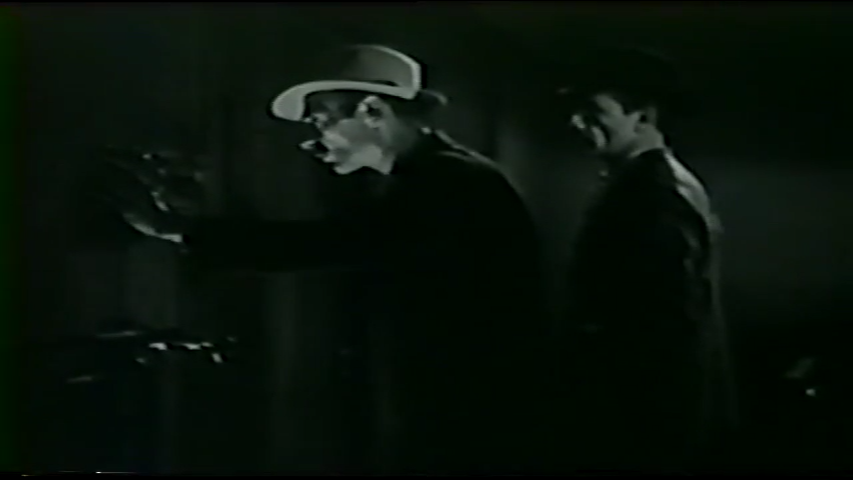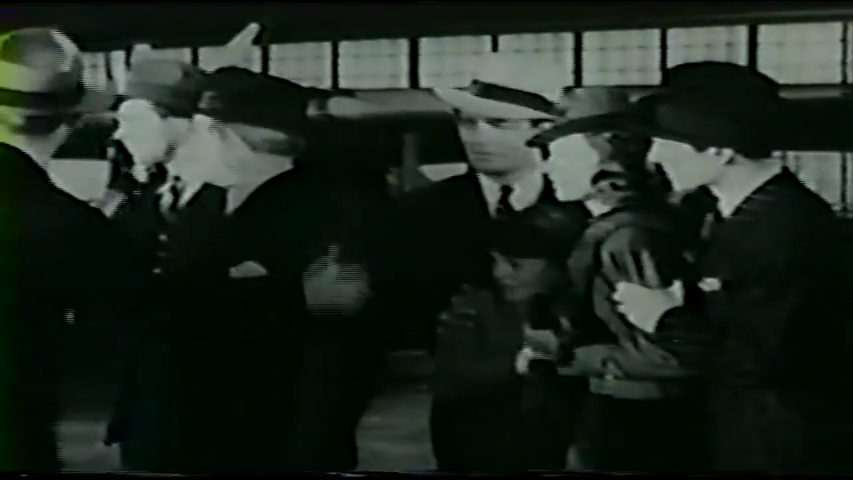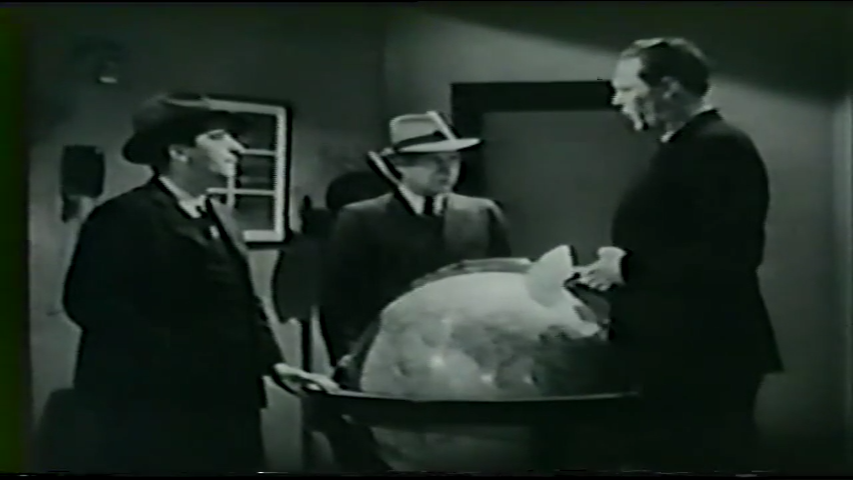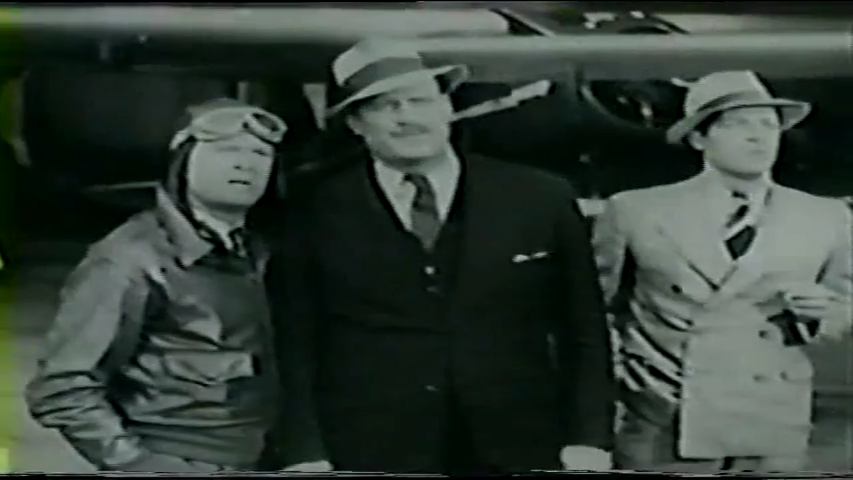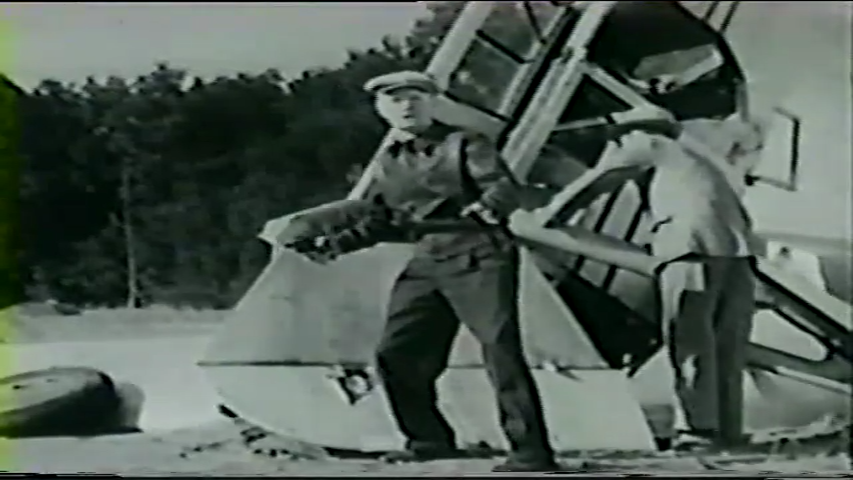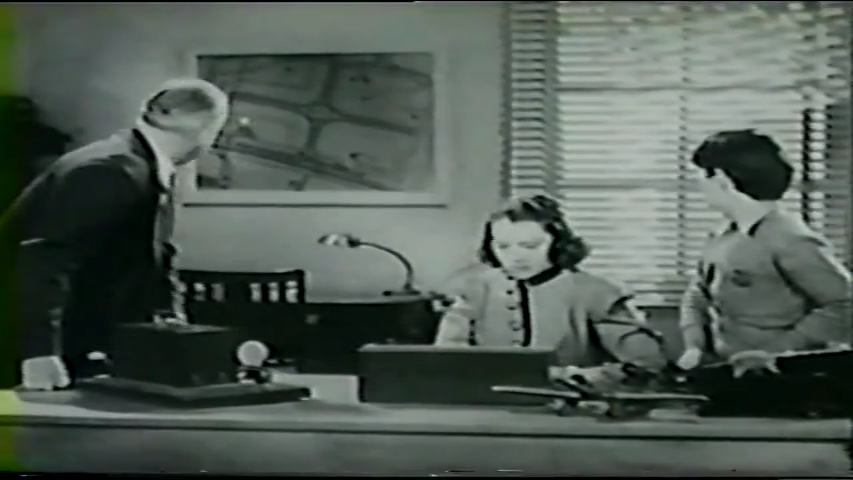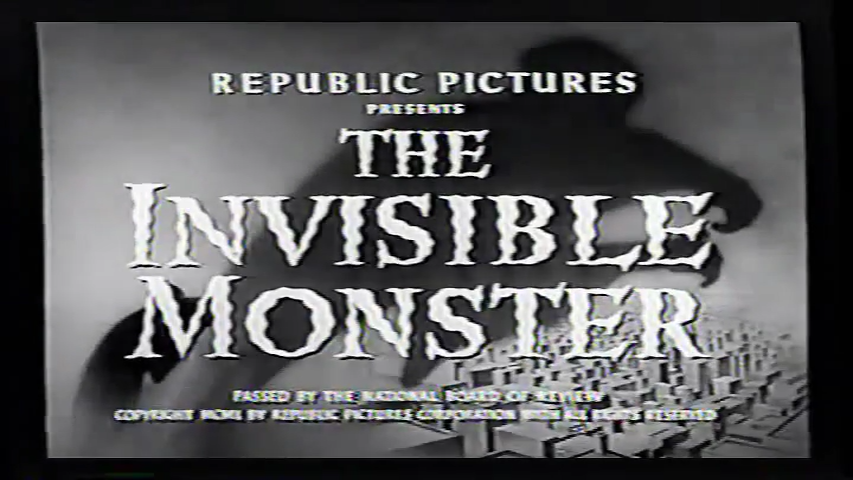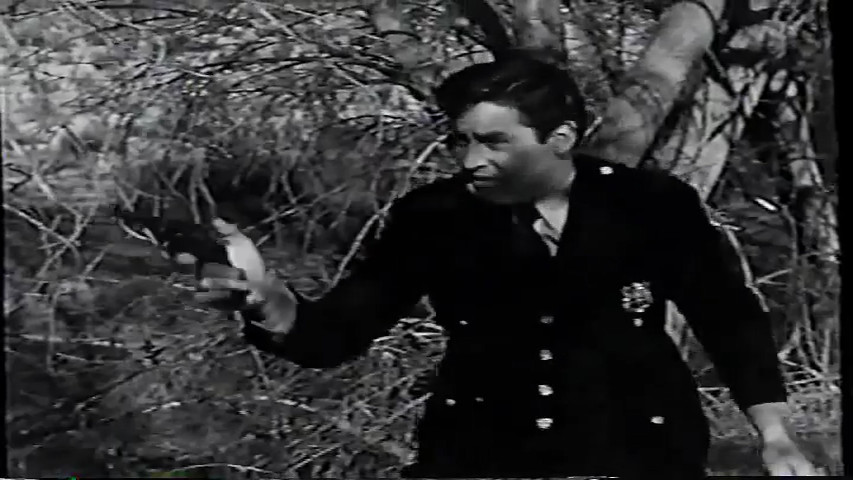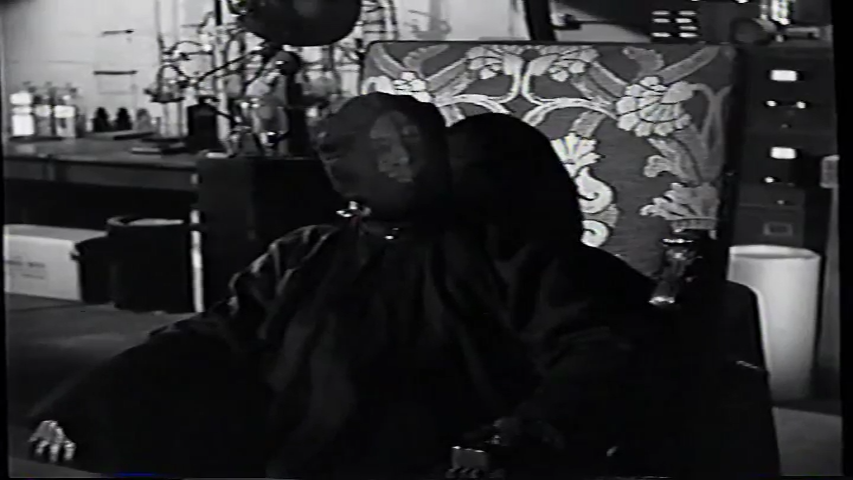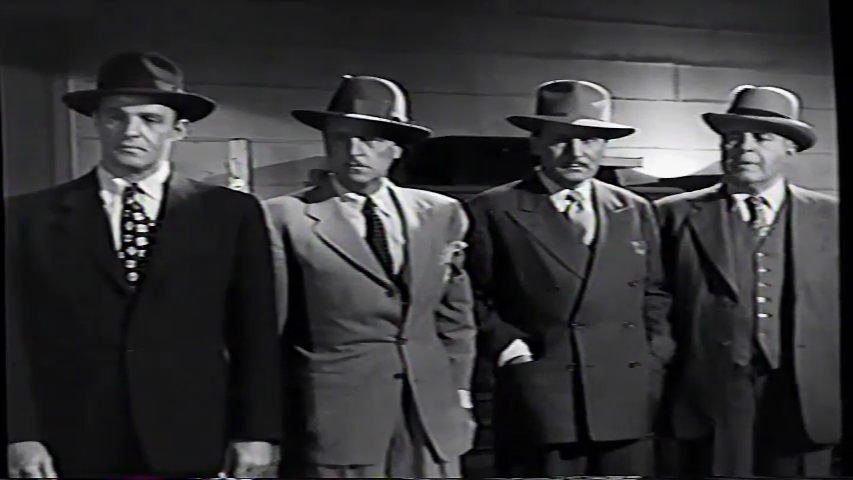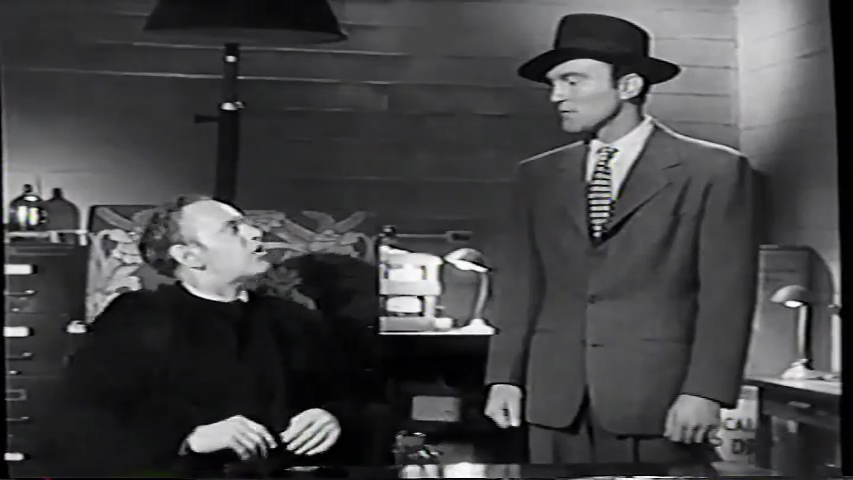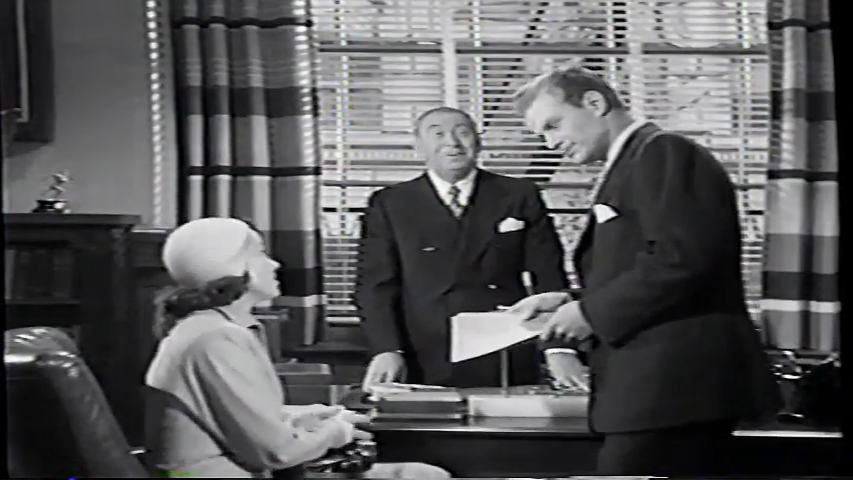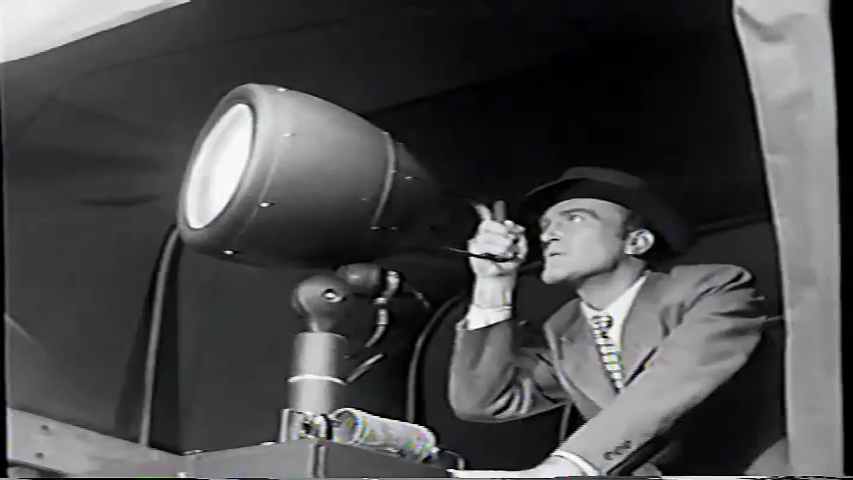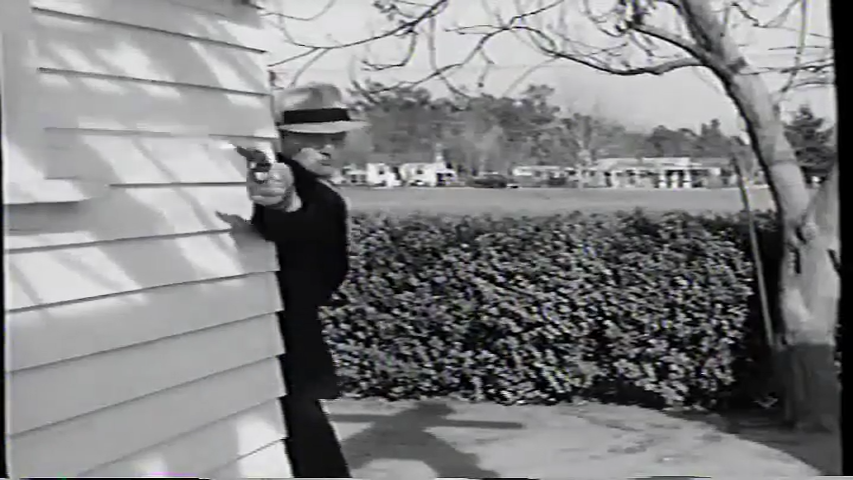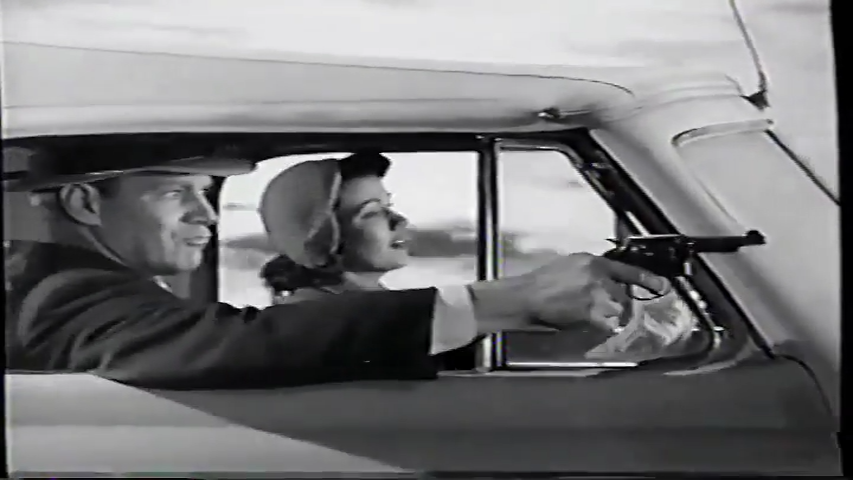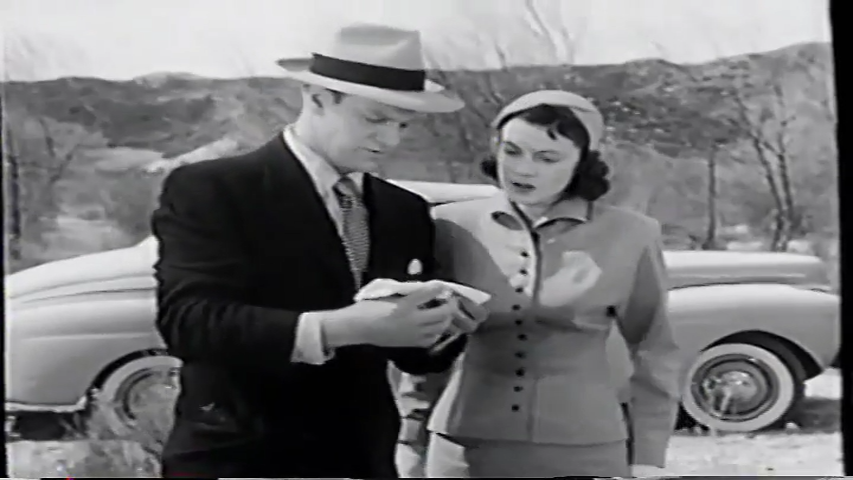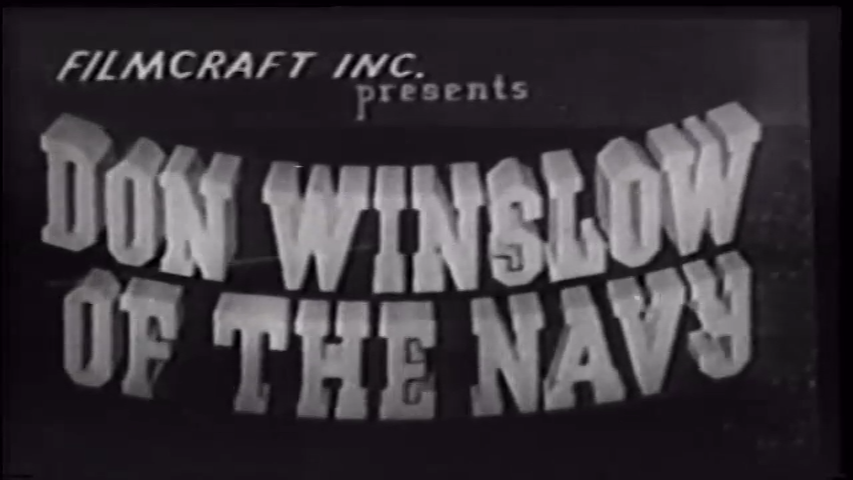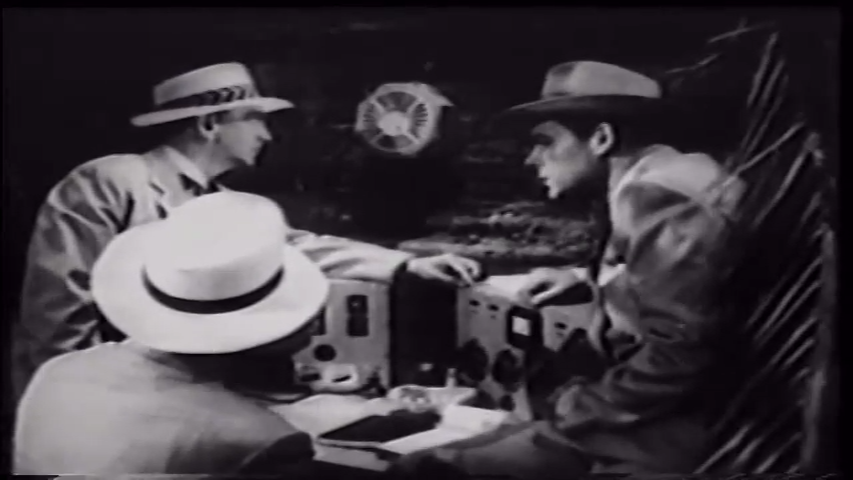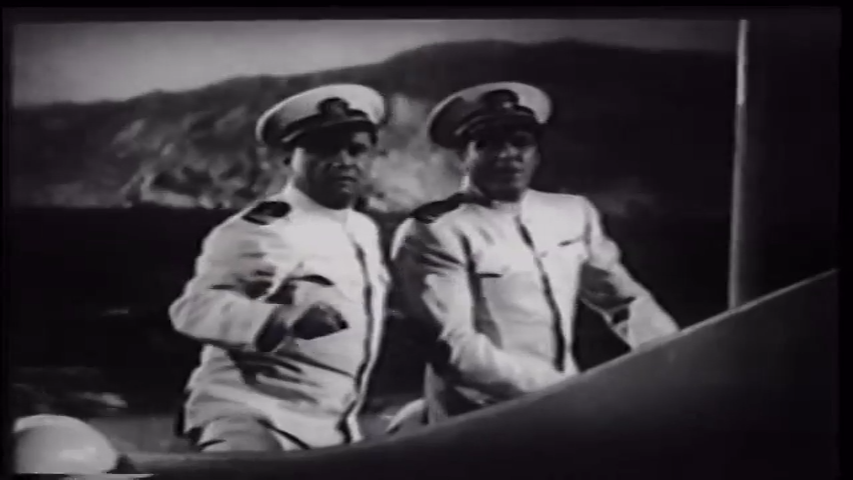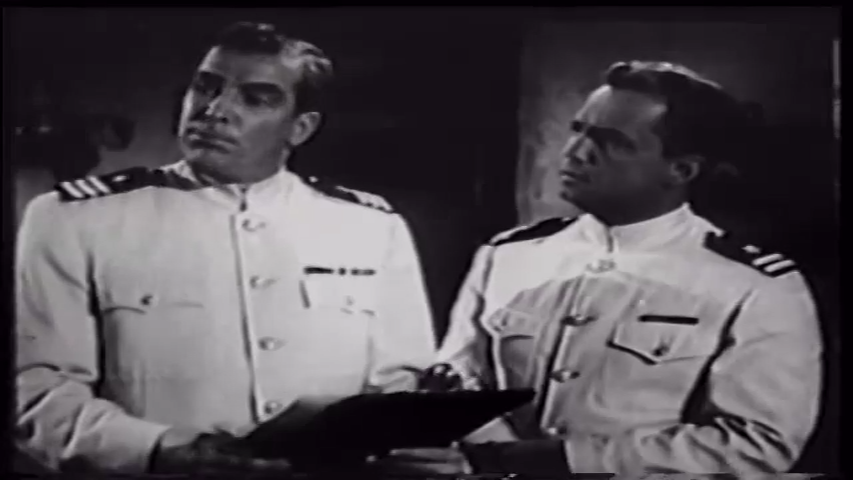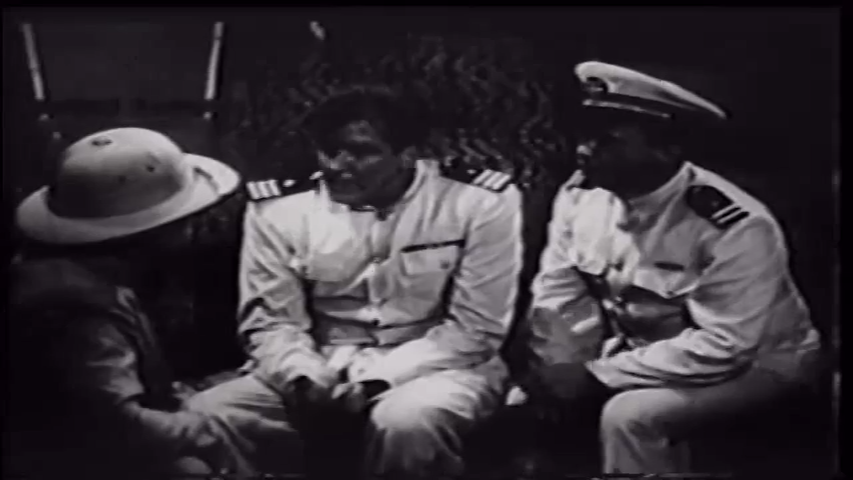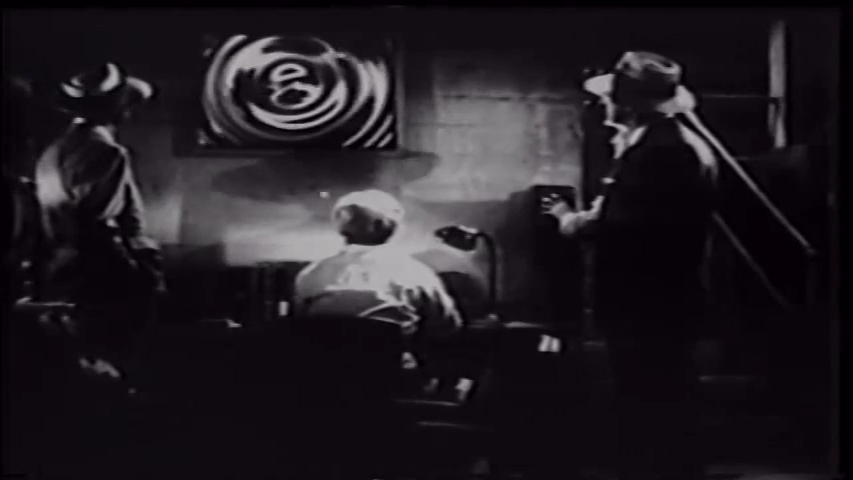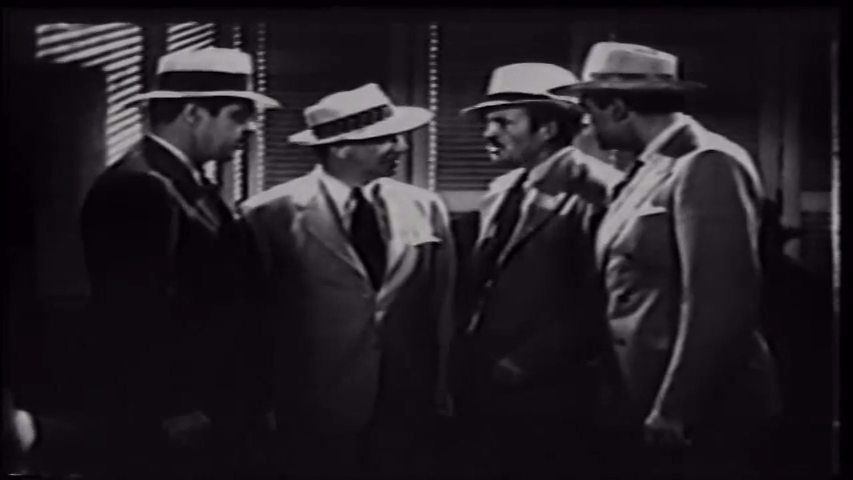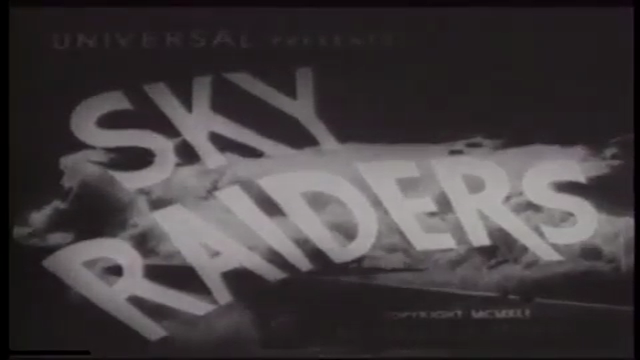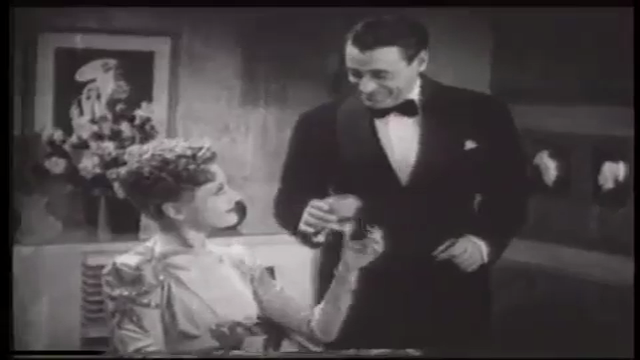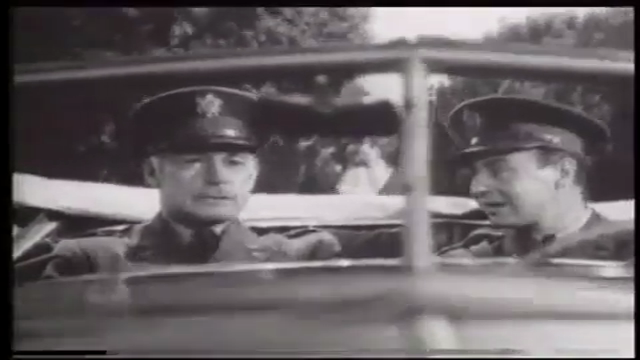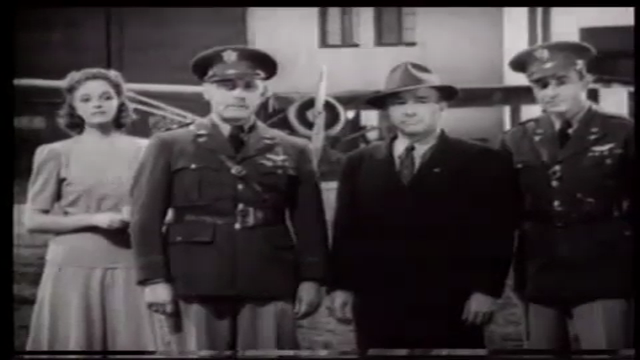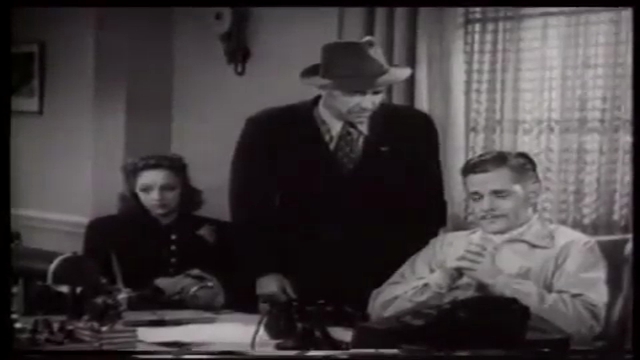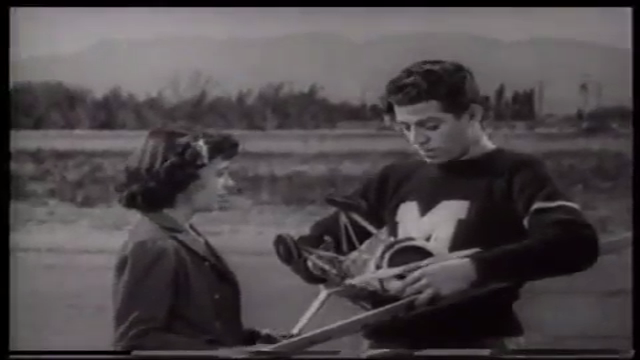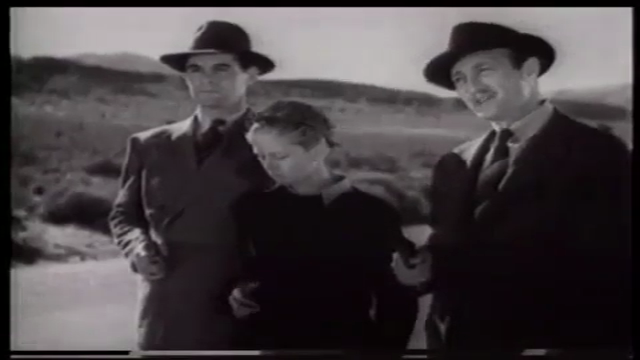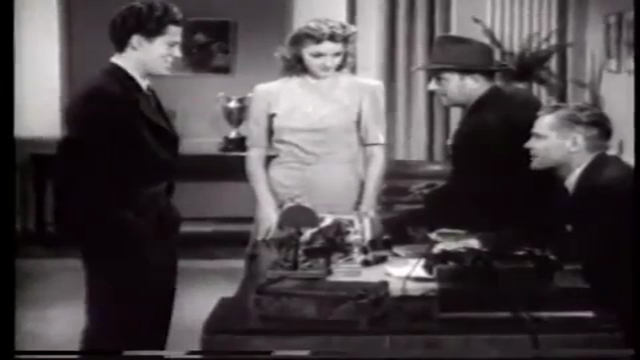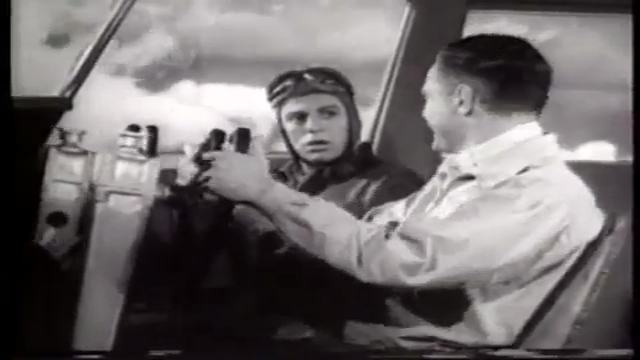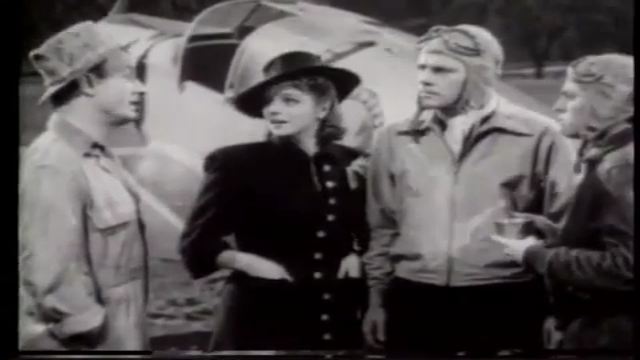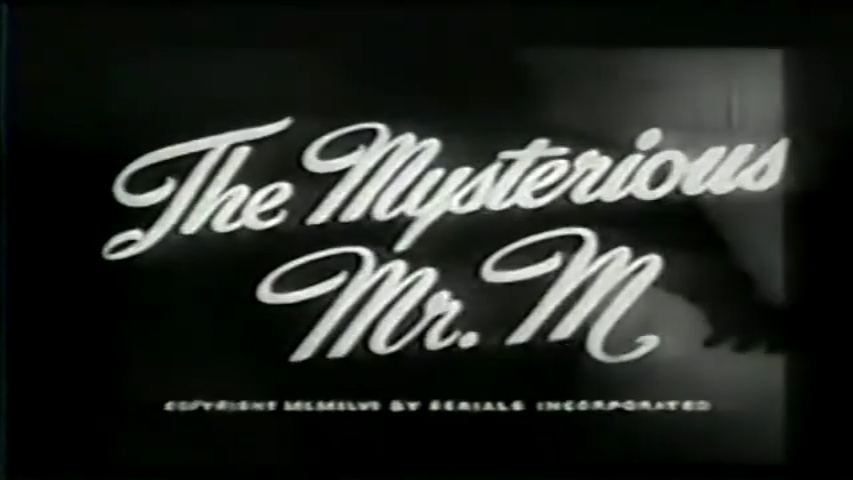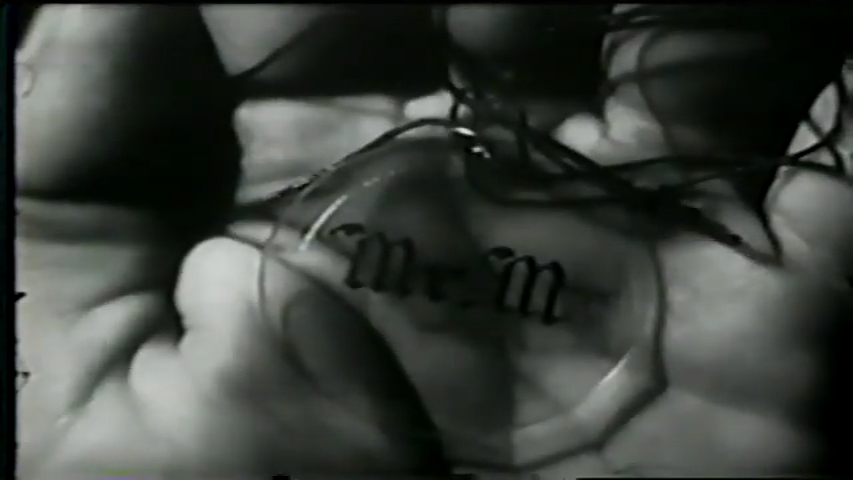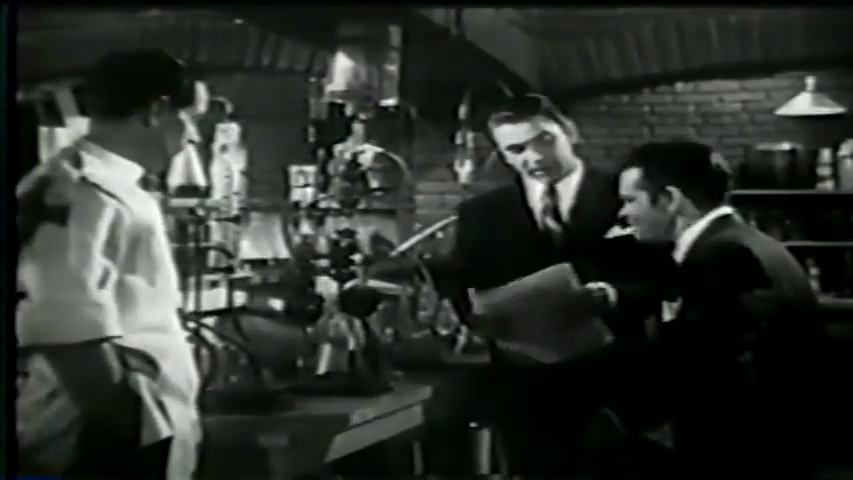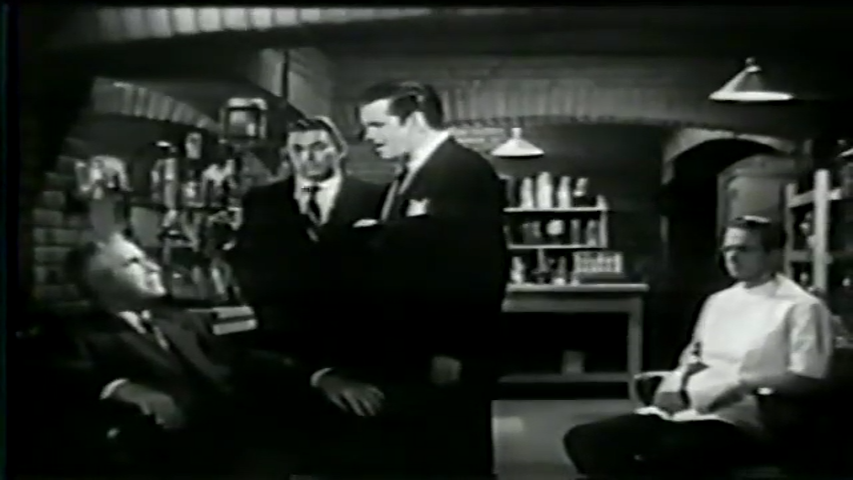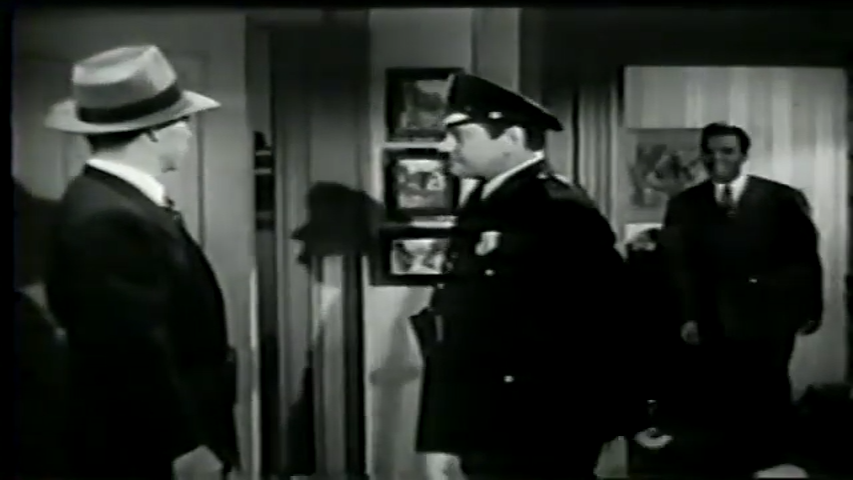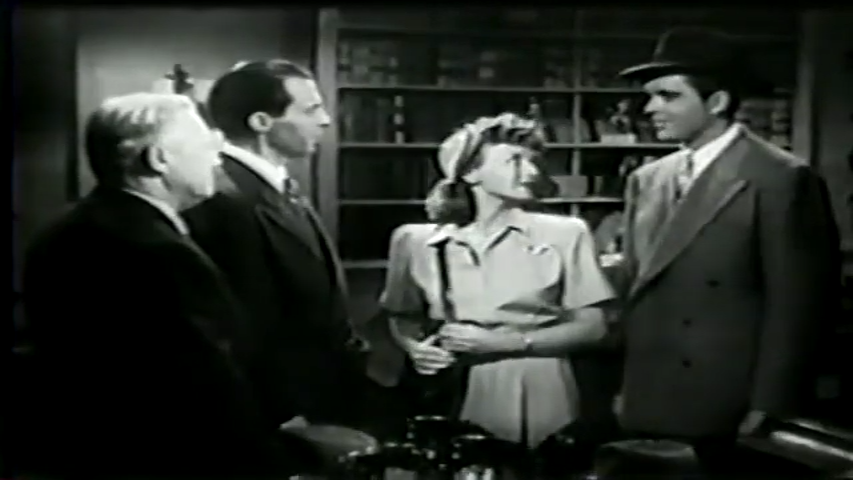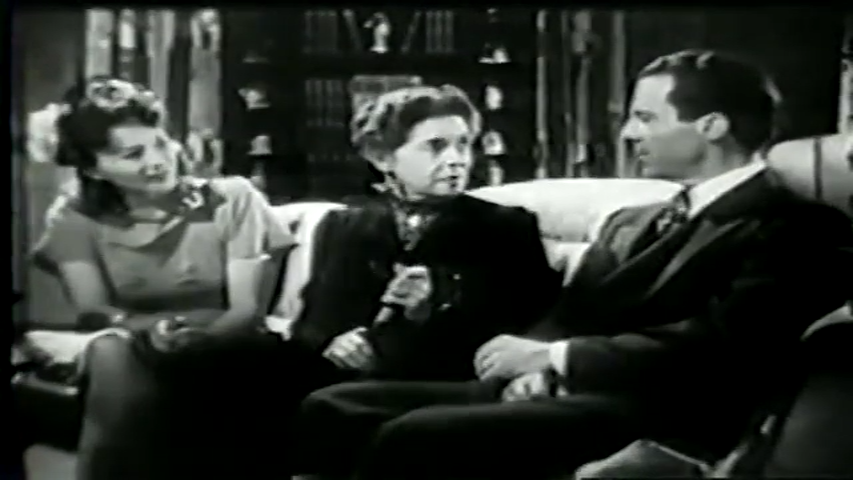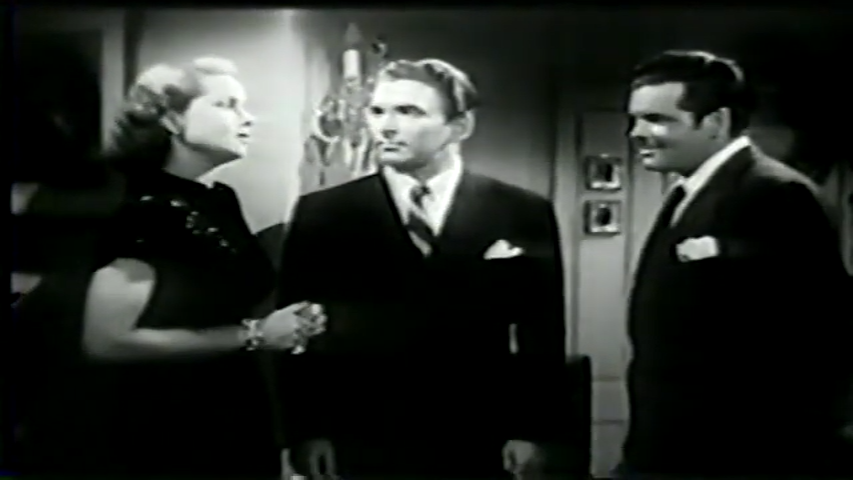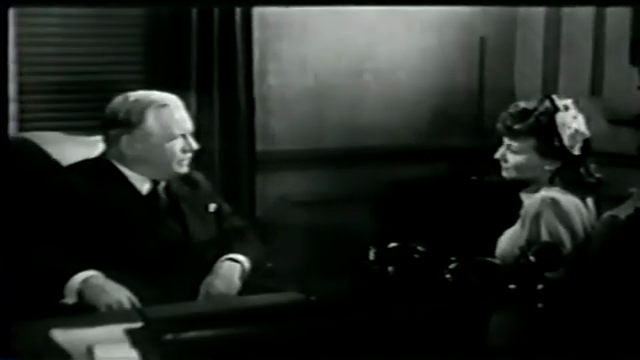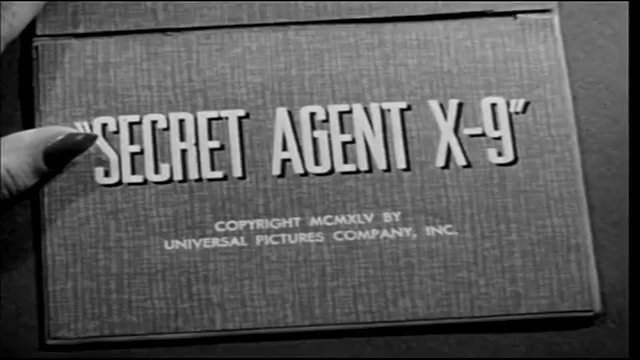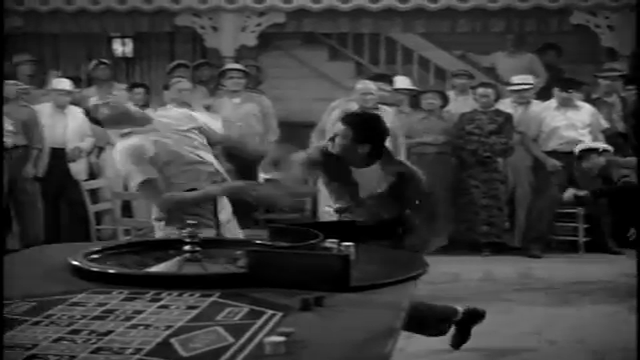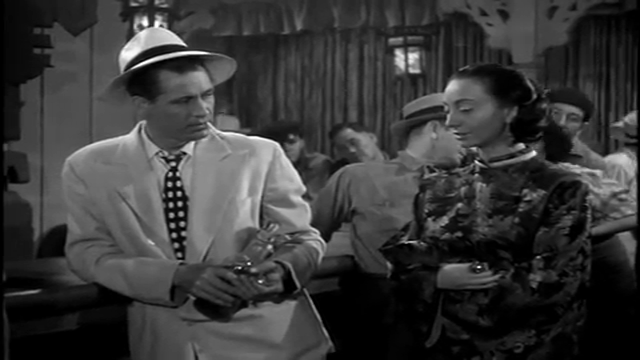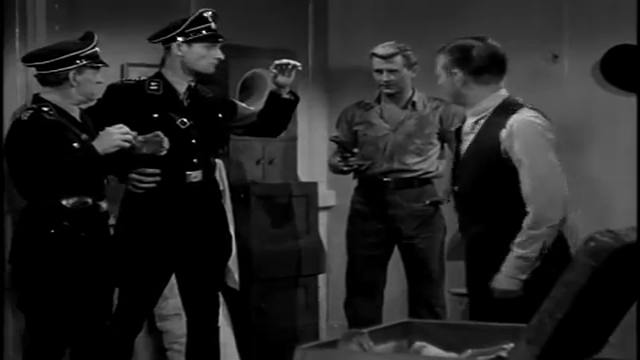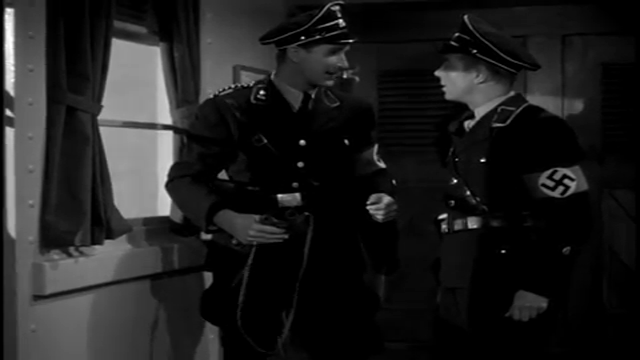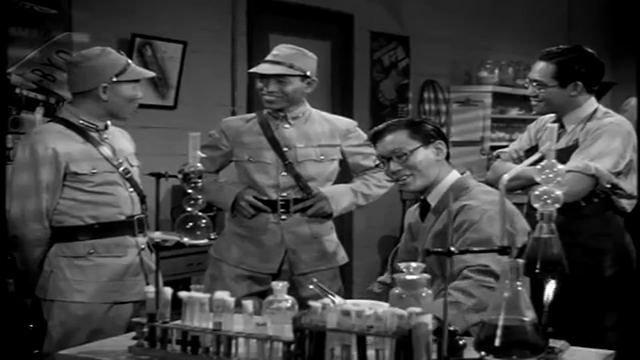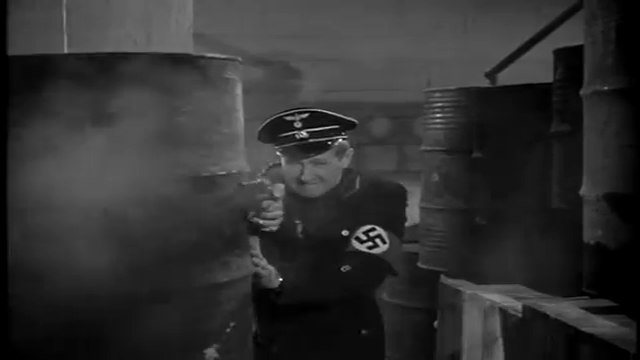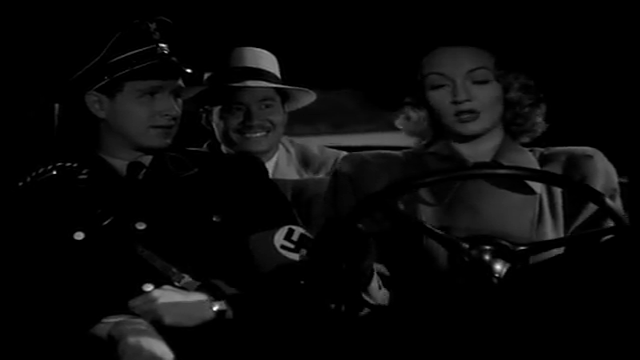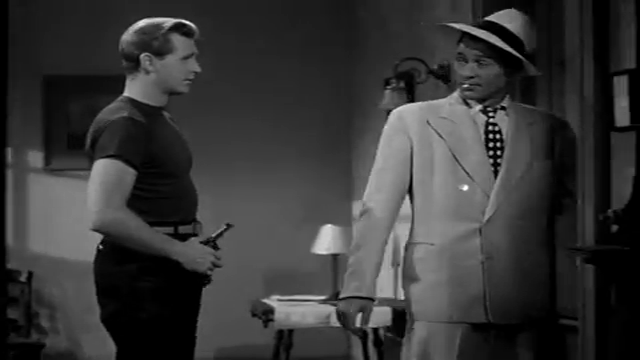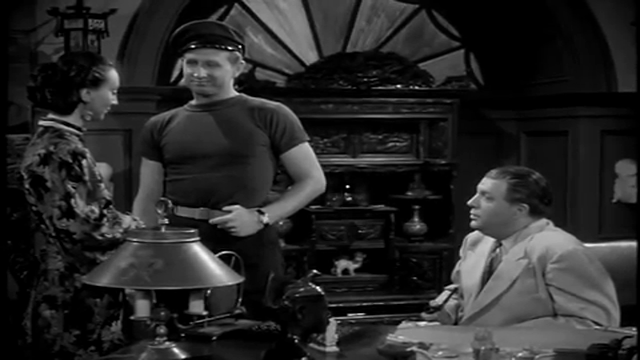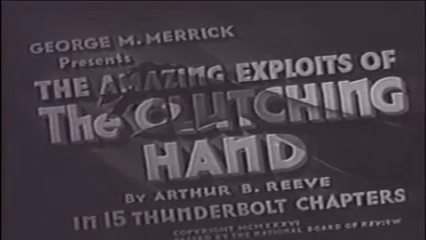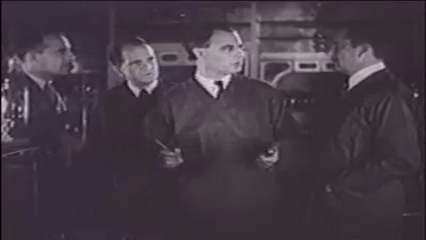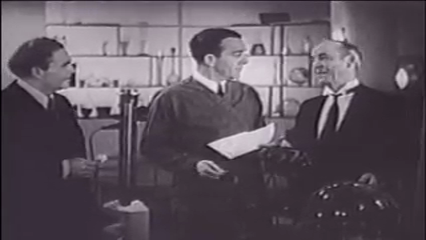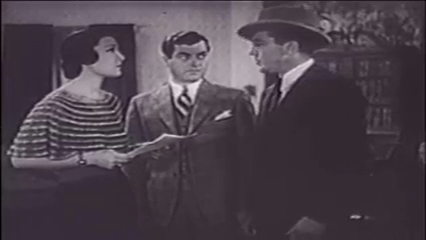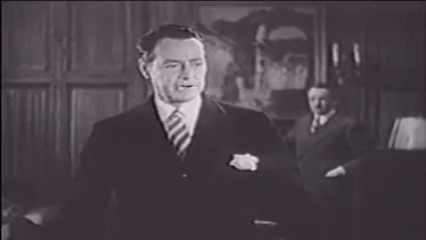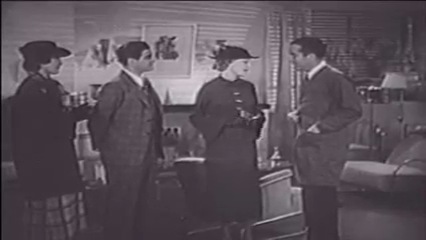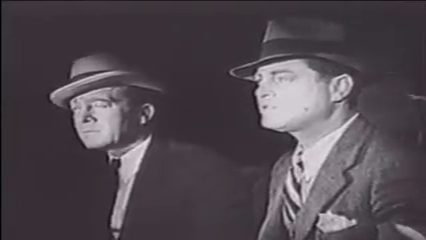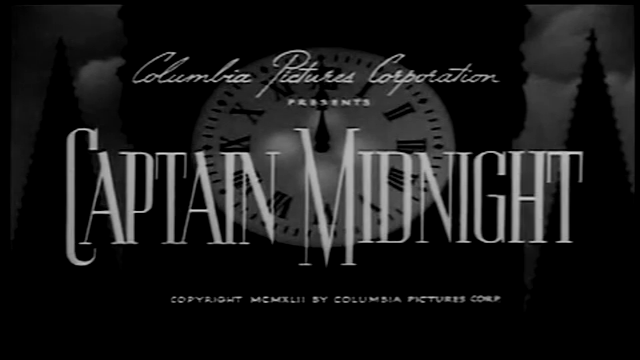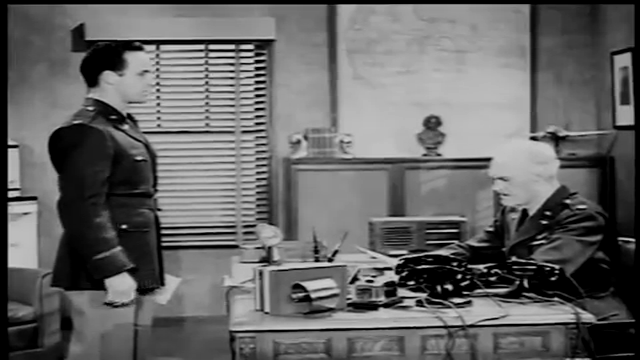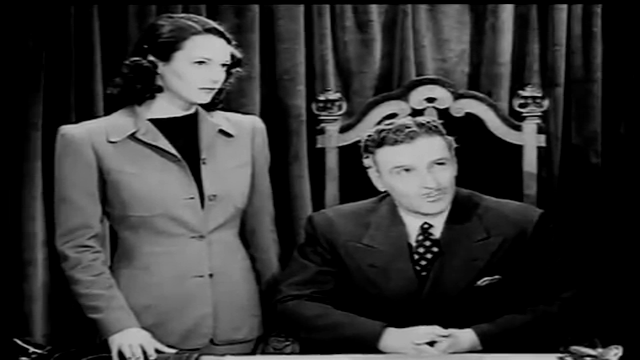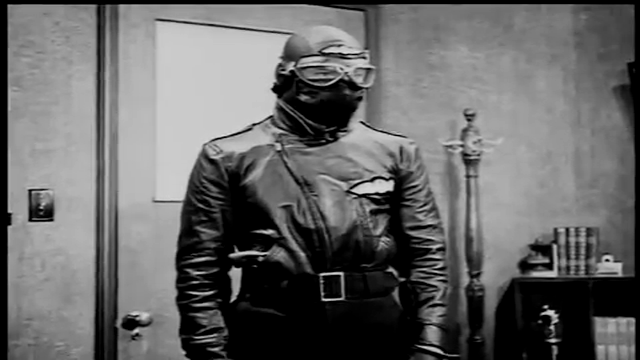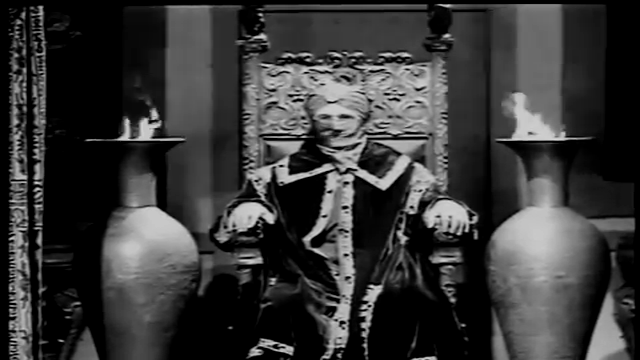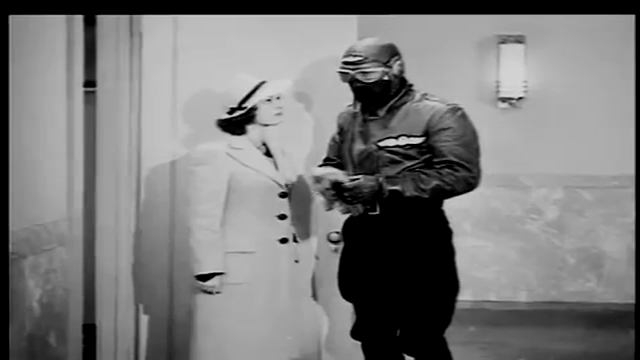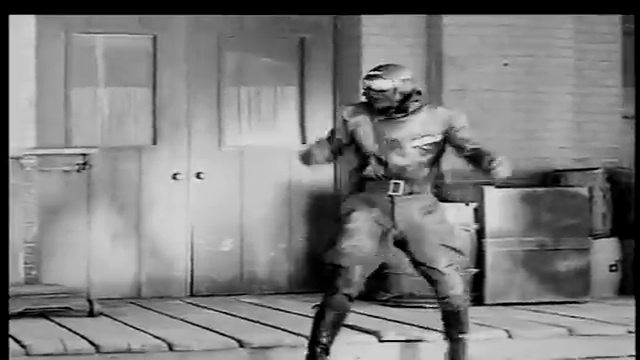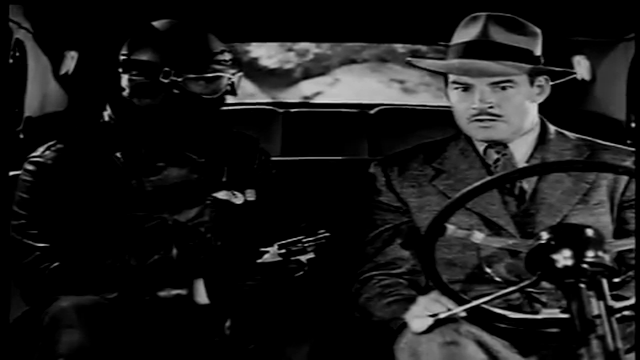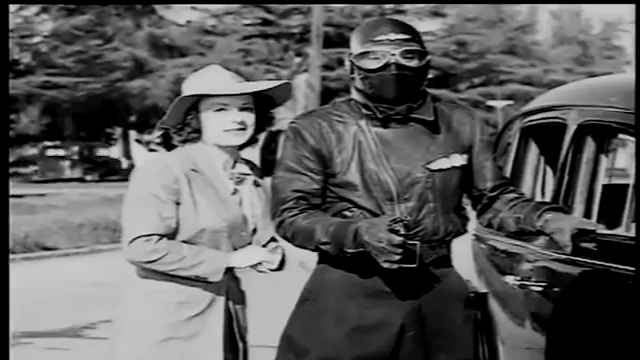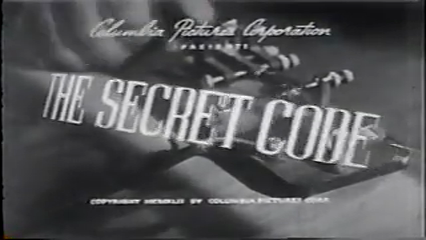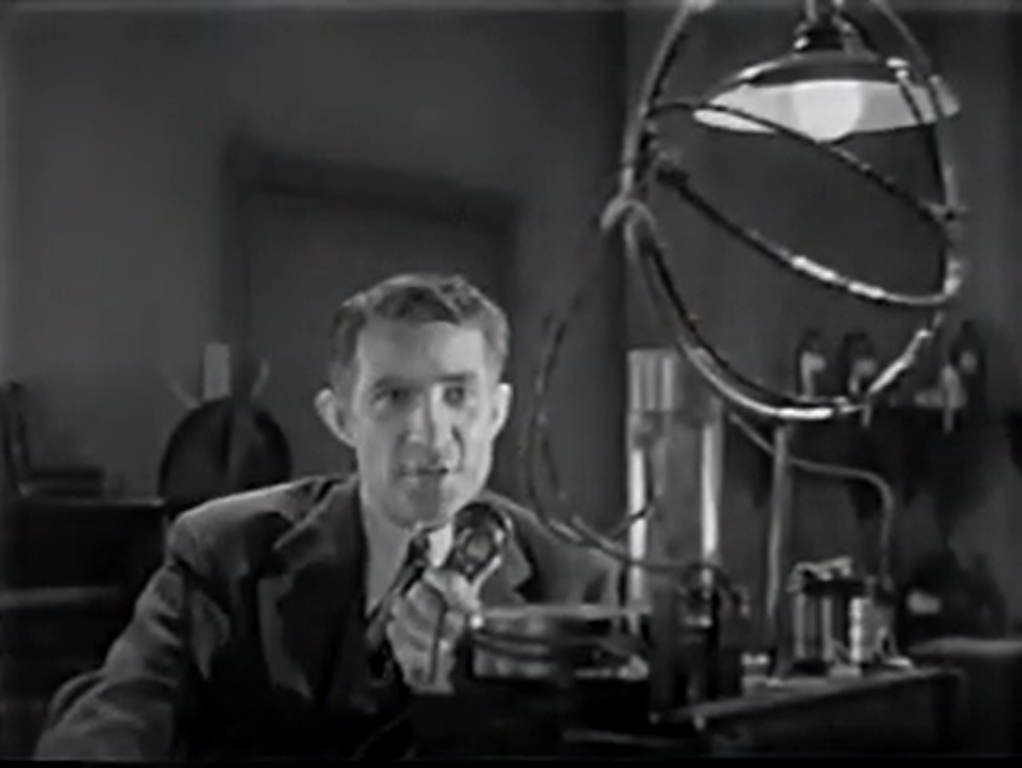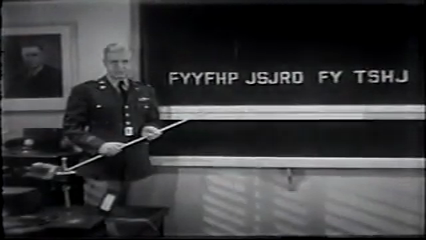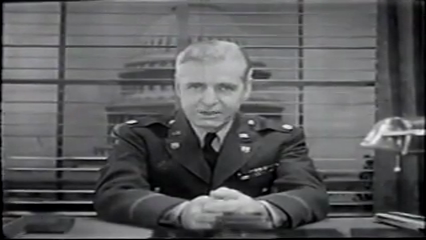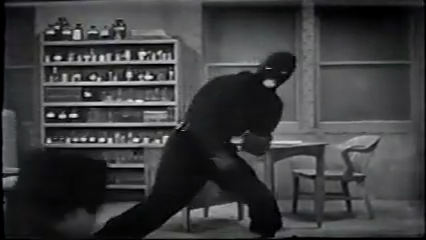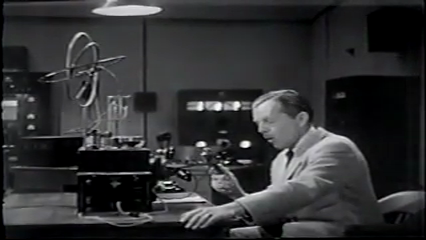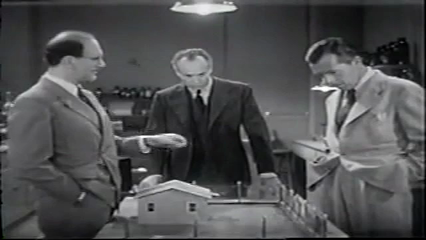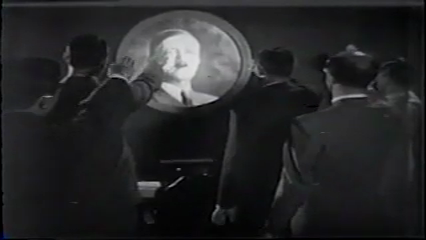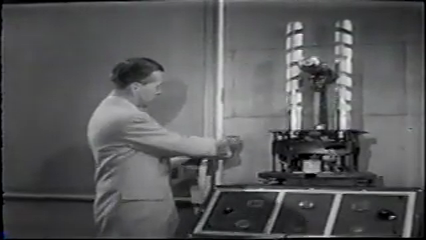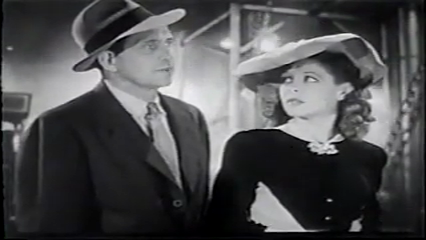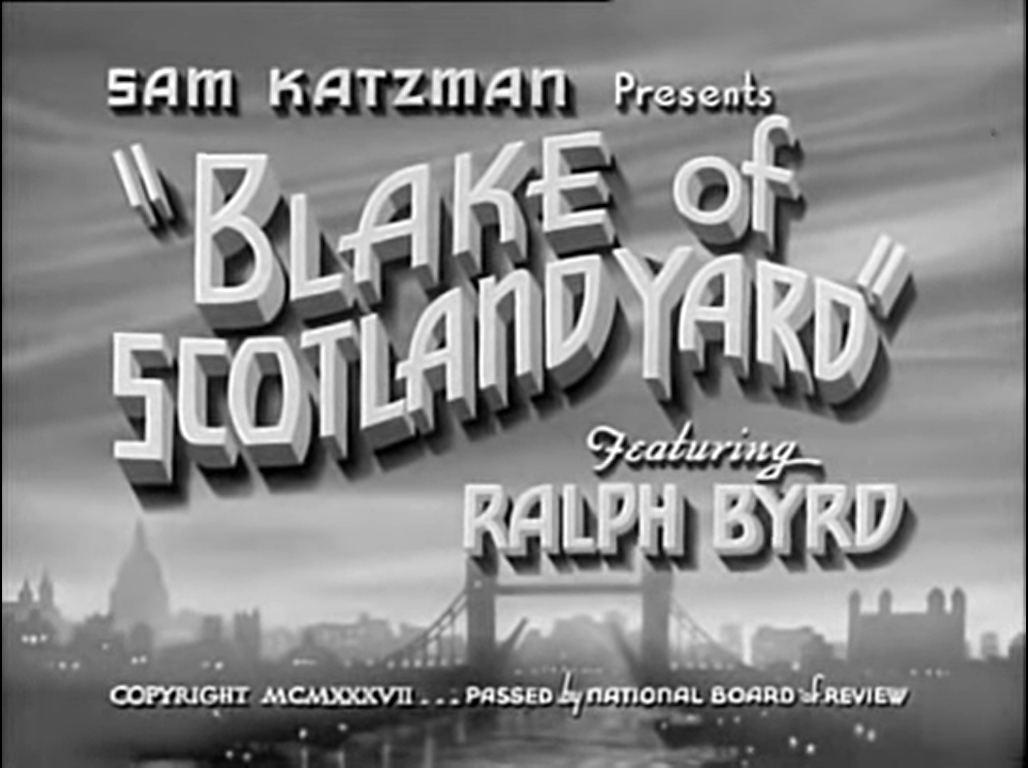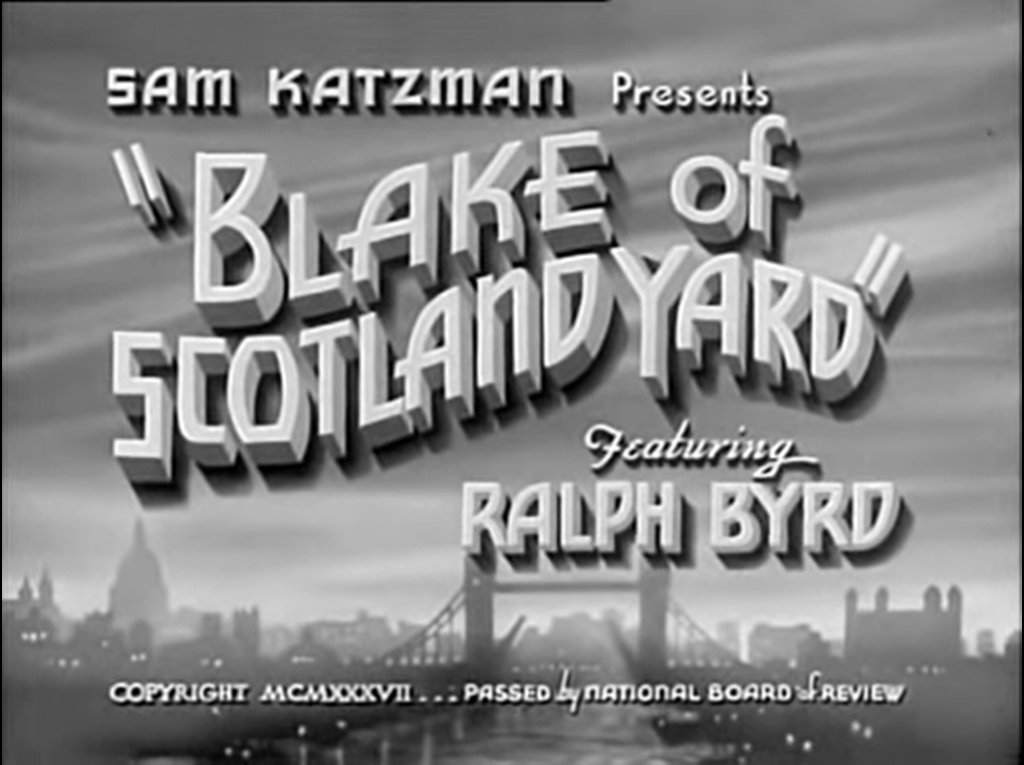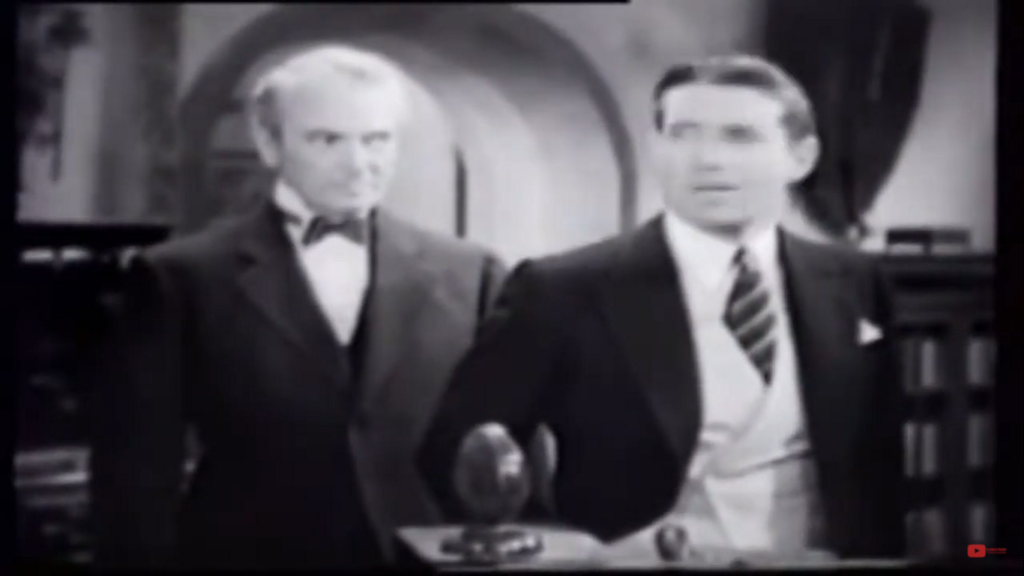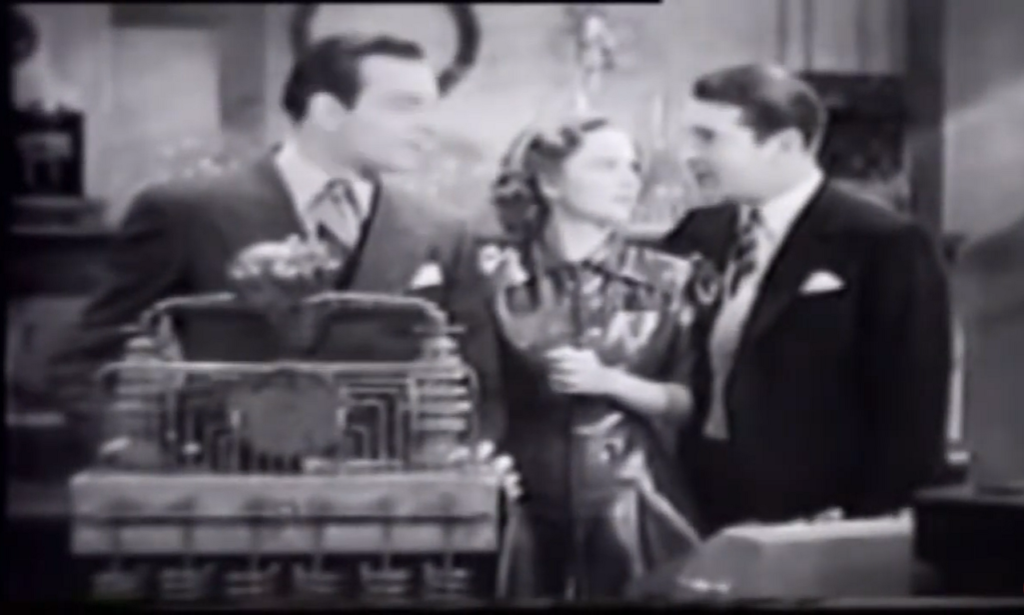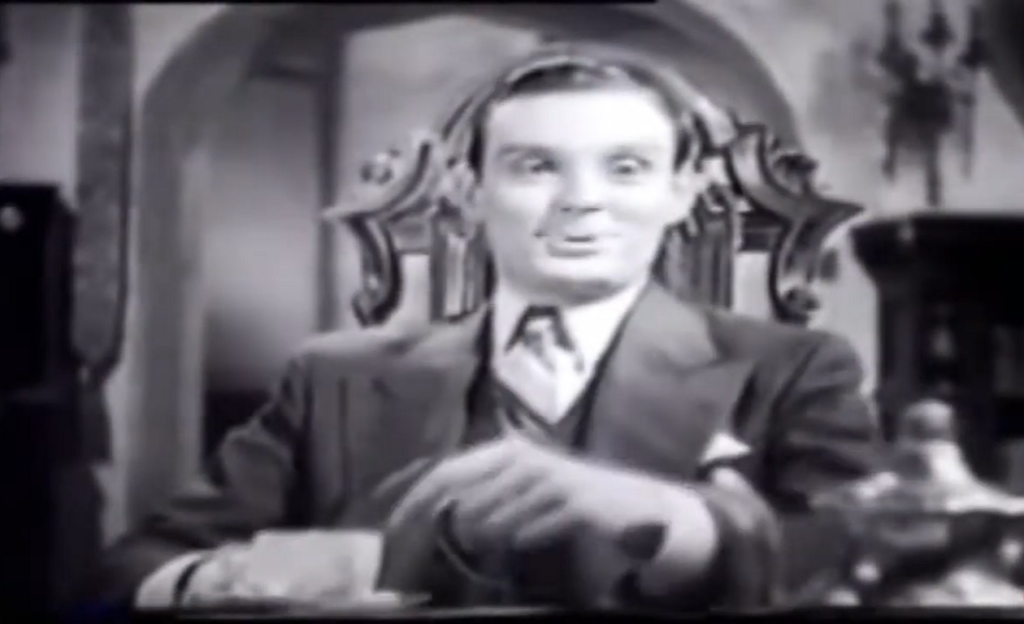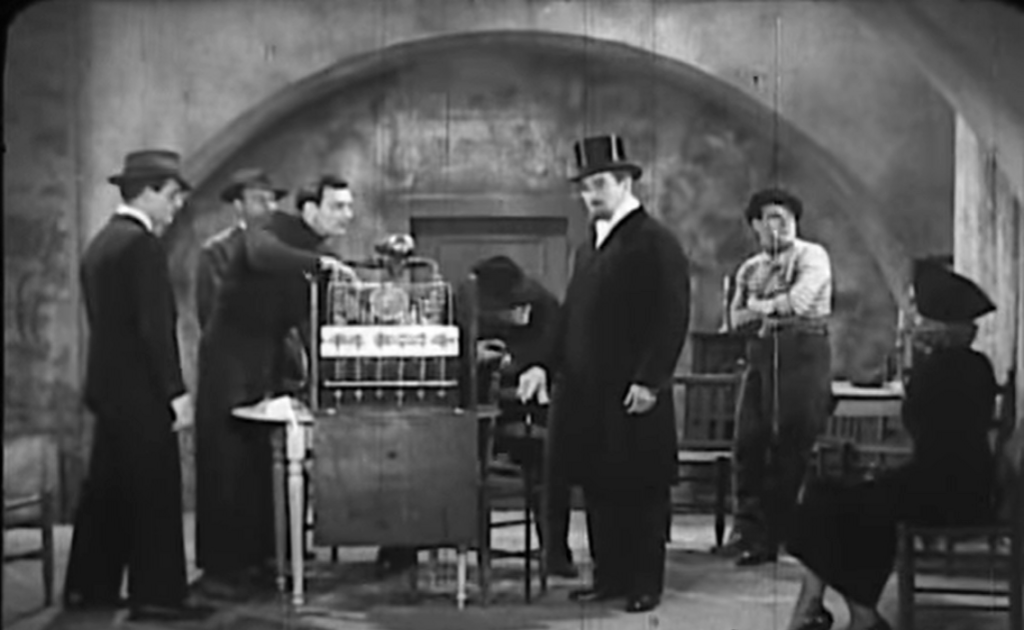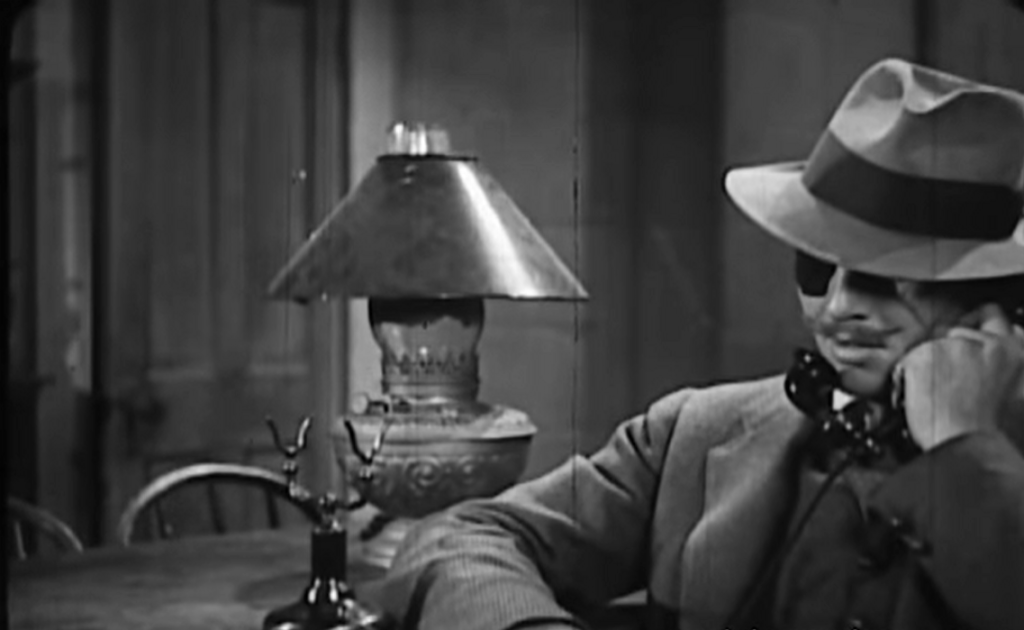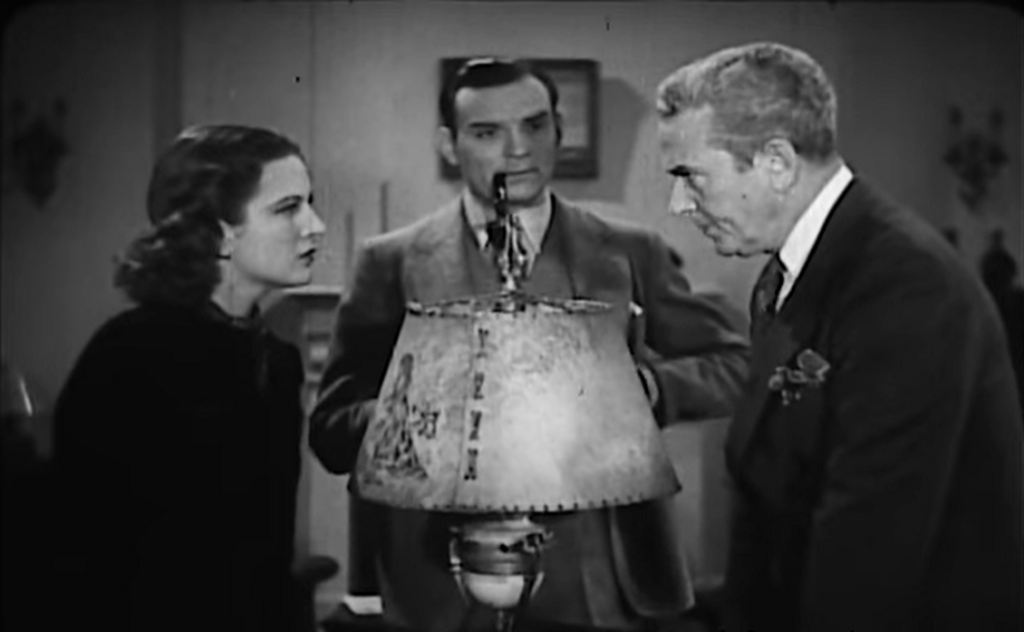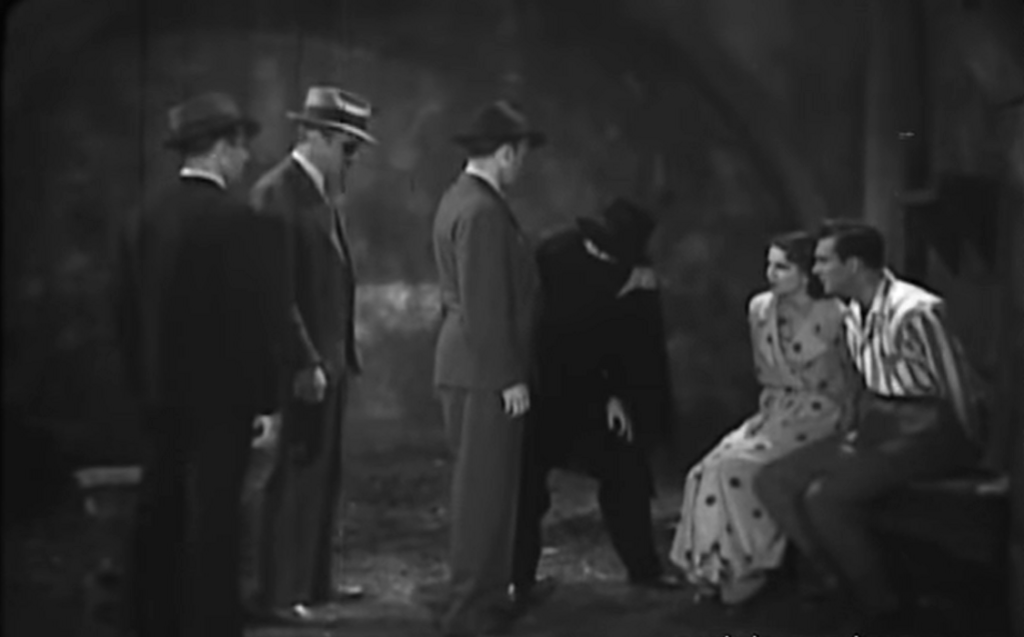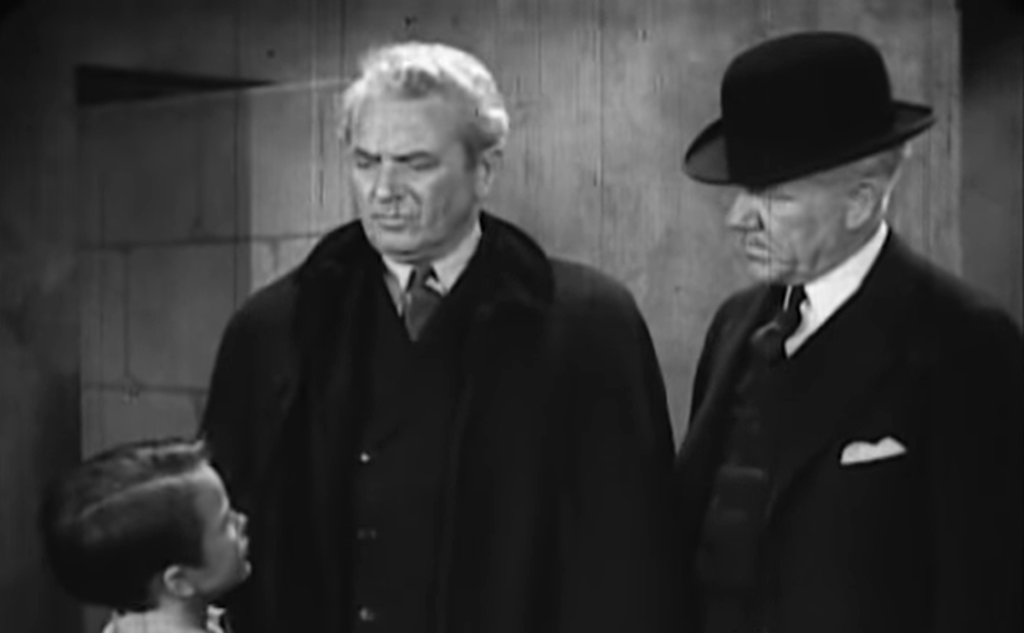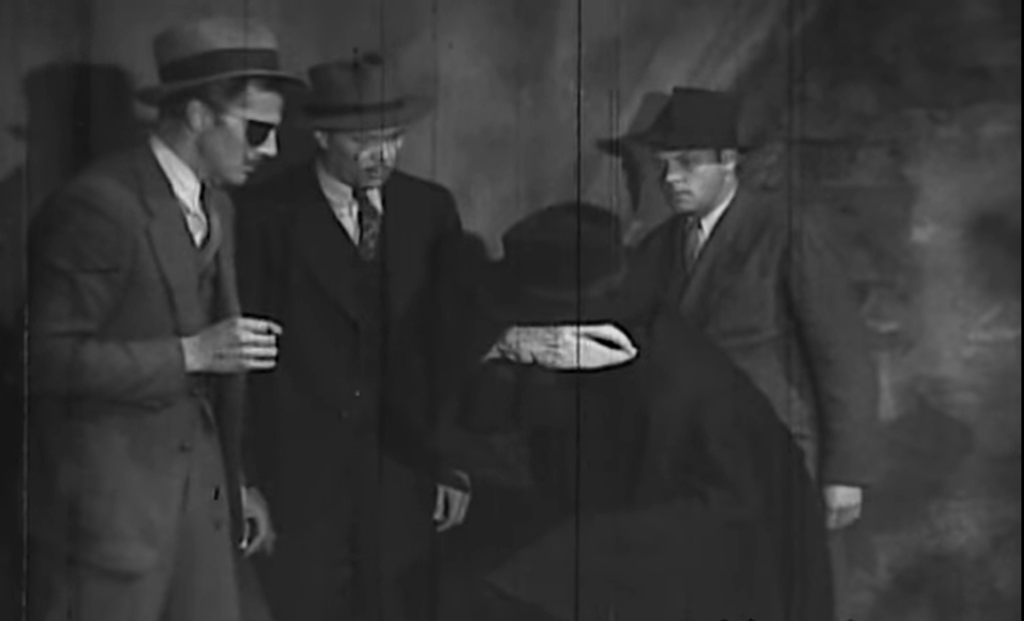-
#438 – Flying G-men (1939)
Flying G-Men (1939)
Film review #438
Directors: Ray Taylor, James W. Horne
SYNOPSIS: Three government ‘G-men’ are tasked with taking down a spy ring that are targeting military defences. To do so, one of them also takes on the masked identity of “The Black Falcon” to operate beyond their operative limits to bring the spies to justice. Learning that a man known only as “The Professor” is leading the spies, they suspect the owner of the local airport to be involved somehow, and work to unravel the mystery and prevent the spies from getting their hands on a new experimental aircraft…
THOUGHTS/ANALYSIS: Flying G-men is a 1939 film serial comprised of fifteen chapters. The seral starts out with four government G-men being assigned to protect a new military aircraft. When one of them is killed by a group of spies attempting to steal the aircraft, the three remaining G-men attempt to hunt down the spy ring before they can sabotage any military defences. To do so, one of them disguises themselves as “The Black Falcon,” who operates individually from them beyond the confines of their job to stop the spy ring. The story is composed of many familiar serial tropes; with the villain secretly being a close associate of the protagonists, plenty of fistfights and chases in cars and planes, and a masked identity for the heroes so they can operate beyond the bounds of the law (this trope saw a decline in the wartime serials, probably because seeing heroes operating beyond the law was a bit too rebellious and similar to spy activities). The identity of “The Black Falcon” as being one of the three heroes and kept secret is a lesser used trope, but has been done before, and their actual identity doesn’t really have any impact on the story. The serial does have a very high-action feel, with it maintaining its energy throughout the chapters, and quickly moving from one action sequence to another. There’s a little bit of standing around and explaining the plot, but it’s nowhere near as bad as some other serials. If you were to go to the theatre each week to watch every new chapter, you would at least get to see plenty of action and be reasonably entertained for fifteen minutes.
The three main characters are the usual heroic leads, in that they are the young, athletic men who can throw the punches in fistfights and jump out of cars without any danger to themselves. being three of them, there’s no need for the usual sidekick character that accompanies the hero to help in the action scenes. There’s nothing to really distinguish the three, apart from one of them being The Black Falcon, the identity of which is revealed in the last minute and has no impact on the plot. However, the three do work together well, and co-ordinate together so you get the sense that they do know each other well. Supporting characters include the sole female character and her young brother, who provides the role that younger viewers can relate with. Their characters are nothing special but do have certain chapters that focus on their actions, so that helps give the serial some variety. The villains are altogether rather uninteresting, with “The Professor” being the mastermind of the spy ring, but his motivations are never explored, making him a rather flat character. His identity as one of the G-men’s friends is not fleshed out, and a very typical plot device of the format.
The car chases and airplane fights, while obviously cheaply produced, work decently enough, and there’s enough explosions and shootouts to keep viewers entertained. There’s also a fair amount of locations used in the serial, as the heroes fight their way though multiple enemy bases. There’s enough variety and action that would have kept the viewers going to the theatre to see Flying G-men to be fairly satisfied, even if it doesn’t do anything too special to set itself apart.
-
#437 – The Invisible Monster (1950)
The Invisible Monster (1950)
Film review #437
Director: Fred C. Brannon
SYNOPSIS: A criminal known only as the “phantom Ruler” has devised a way to turn invisible by covering his clothing in a special chemical and remaining under a specific light source. He coaxes some men who have illegally entered the country to be his underlings, setting them up in various jobs to sabotage security and such in order to commit crimes. Insurance agent Lane Carson is tasked with investigating the incidents, alongside his new assistant Carol Richards, and stopping the Phantom Ruler from getting the necessary materials for creating an invisible army…
THOUGHTS/ANALYSIS: The Invisible Monster is a 1950 serial by Republic Pictures comprised of twelve chapters. The story is a familiar one to serial-watchers, as insurance investigator Chase Lane is assigned to stop a series of crimes committed by “The Phantom Ruler” before he can build an invisible army. The structure is pretty similar to every other serial of the time, but the specifics of the plot are fairly ridiculous and without logic. The trope of invisibility has been overused in serials (particularly by 1950 when this serial was released), but this serial invents such an incomprehensible and overly complicated logic for the trope that it renders the whole setup unconvincing: The Phantom Ruler has discovered a chemical that can turn whatever is covered in it invisible, but only when a specific type of light is shined upon it. This means that in order to turn invisible, The Phantom Ruler has to cover his robe in it, and have a spotlight shined on him whenever he wants to be invisible. This leads to some ridiculous scenes where he goes out to do things while invisible, but one of his underlings is hanging out the back of a van with a huge spotlight shining on him to keep him invisible. Luckily there’s no one about when he does these things, otherwise the presence of a man moving a spotlight around in the middle of the day might be a little suspicious. We see the spotlight move across the scenes to signify where the Phantom Ruler is, so if anyone can see the spotlight, they will surely be suspicious about anything happening within it. I’m also not sure if the visible spotlight is for the viewers benefit, or if the characters themselves can actually see it. Either way, the overly-complicated mechanisms are pretty ridiculous, and really stifle any possibilities that could arise from the use of invisibility. Aside from this, there’s the usual car chases, fist fights and shoot-outs you would expect, although they are rather predictable.
The cast is fairly small, and rather unremarkable. Chase Lane is the typical serial lead (despite the untypical name) and Carol Richards pays the token female, although as an “assistant” she does actually have things to do, and gets involved in the car chases, and shootouts etc. which would typically be done by another young male “sidekick” character. The villain gets a surprising amount of screentime too, as his invisibility trick is the only stand-out part of this serial, so we get a fair amount of focus on seeing him carry out his crimes…or not carry them out, since he’s invisible and all. We’re never given his name or any information about him other than he wants to make an invisible army to take over the city/country…which also seems a bit of an issue; where is he going to find a spotlight big enough to conceal an entire army? Nothing about this scheme makes sense. Anyway, seeing the villain do most of the criminal work is a bit different than the usual types who stay hidden and get their henchmen to do their dirty work. The Phantom Ruler’s henchmen are given a bit of motive, in that they are immigrants who have illegally entered the country, and The Phantom blackmails them to do his bidding lest he turn the over to the authorities. A small detail, but one more than is usually given in these serials.
Serials such as this usually have a very quick turn-around, with the whole thing being filmed in less than a month. The Invisible Monster feels like it was hastily put together even by serial standards. It is only twelve chapters long (which is the standard minimum number), but the chapters each run at just over thirteen minutes, and when you take out the title sequence and the re-used footage from the previous chapter to resolve the cliffhanger, that goes down to about eleven minutes, which if you had to go to the theatre every week to see each new chapter just for eleven minutes, it wouldn’t really be worth the effort. Also chapter ten is a “recap” chapter which just recaps the story using mostly previous footage, cutting down even further the material produced. The cliffhangers themselves are nothing special, and are very predictable, and the use of model cars going over cliffs is blatantly obvious. The acting is alright, but the scripting and dialogue is bad in the sense that there’s a lot of people explaining what the current situation is instead of showing it (this was typically used for the benefit of viewers who had not watched previous chapters), and also the traps and schemes the characters fall into are so blatant it makes everyone seem naïve and without any thought processes whatsoever, rendering them as mindless cut-outs explaining what they are doing instead of actually doing it. Overall, The Invisible Monster is a dull serial released past the peak of the format, and offering little to viewers. It’s hasty production skips out on making anything interesting, and the whole invisibility plot device is completely non-sensical and fails to stand up to any sort of logic. Even if you’re a serial fan, it’s not worth your time.
-
#436 – Don Winslow of the Navy (1942)
Don Winslow of the Navy (1942)
Film review #436
Directors: Lewis D. Collins, Ray Taylor
SYNOPSIS: Commander Don Winslow of the U.S. Navy is assigned to stop a foreign spy ring that is intent on sabotaging the construction of a new naval base on an island in the Pacific Ocean. Winslow and his friends battle against the head of the spy ring, known only as “The Scorpion” and seek to foil his evil schemes across land, sea and air…
THOUGHTS/ANALYSIS: Don Winslow of the Navy is a 1942 film serial comprised of twelve chapters, and is based on the U.S. navy approved comic strip character of the same name. The story concerns Commander Winslow being assigned to stop a spy ring from sabotaging the construction of a new naval base in the Pacific Ocean. There’s not really anything special to say about the plot; it is a fairly standard setup that is found in nearly every wartime serial. While it is to be expected that these serials served as propaganda at the time for the war effort, Don Winslow was a character that was sanctioned and approved by the U.S. navy, so while this means that the uniforms and representation of the navy are fairly accurate, it probably means that there was a lot of oversight regarding what he should and shouldn’t do. I think this is probably the reason why he rarely gets into fistfights or other messy situations (although he does more so than in the sequel, where he never gets rough with anyone). Whereas the pre-wartime serials had plenty of lead characters that would don masks to conduct vigilante missions against the enemy, pre and post-war serials typically reserved such costumes and roles for the villains, while making leads that were victorious American soldiers.
The characters are about what you’d expect from a serial, with Winslow being the face of the navy in the serial, and being expectedly heroic and patriotic. His fellow navy officer “Red” serves as his friend and backup in the action scenes, and Mercedes Colby fills the single female role. The villains are also pretty standard, with a bunch of henchmen being led by a man who is only known as “The Scorpion,” who as usual is a white man in make-up to “look” Japanese. We only ever see him, however, on a screen in the spy’s secret base, and there is no final showdown with him (he is however, confronted in the sequel). One very distracting thing about The Scorpion is that with the close-ups of his face on the screen, you can clearly tell the actor is reading his lines as his eyes move left to right, which is quite distracting.
There’s plenty of stock footage used of navy vessels and submarines that makes the action a bit more exciting, which again is probably owed to the fact that the serial had the involvement of the U.S. navy (although I’m led to believe that the submarine that shows up in the stock footage is a British submarine). The models used for the airplanes and such, are far less convincing. The cliffhangers usually end up with Winslow getting caught in an explosion or a collapsing building, and usually walking away with nothing more than a limp. Again, fairly standard resolution to the chapter cliffhangers, and obviously they’re not going to show a navy officer getting seriously hurt if they’re being portrayed as strong invincible heroes of the war. Overall, Don Winslow of the Navy is what you would expect from a wartime serial. It’s not particularly interesting and neither does it offer anything new or original. The use of stock footage of ships and navy vessels gives it a larger sense of scale, but it’s a product of wartime propaganda that serves almost exclusively that purpose, and not worth seeking out.
-
#432 – Sky Raiders (1941)
Sky Raiders (1941)
Film review #432
Directors: Ford Beebe, Ray Taylor
SYNOPSIS: World War One pilot Bob Dayton operates the aircraft manufacturer Sky Raiders inc. along with his friend Lieutenant Ed Carey. When Dayton invents a new type of high-speed aircraft, a foreign spy named Felix Lynx, aided by Countess Irene, attempt to steal the aircraft in order to sell it to a foreign government.
THOUGHTS/ANALYSIS: Sky Raiders is a 1941 Universal film serial comprised of twelve chapters. As the title suggests, airplanes form the basis of the serial’s action. The story centres around former World War (one) pilot Bob Dayton, who owns the aircraft manufacturer “Sky Raiders Incorporated,” who has developed a new aircraft bombsight and a high-speed aircraft that he intends to sell to the American government, but spy Felix Lynx is hired by Countess Irene to steal the plane so she can sell it to a foreign government. The plot should be extremely familiar to serial goers, as it follows the usual tropes and plot elements they all have, from vehicle chases, fistfights, cliffhangers, and various plans to foil. The theme of aviation is one that is used in a fair few serials, and there’s definitely enough dogfights and planes to justify the theme. Other than that, there’s not much remarkable in terms of the story, as the characters just seem to wander into dangers and unremarkably find themselves out of them, while the villains haphazardly try to get what they want. There’s some development with the characters and their personalities do play into the story a little, but not too much.
Bob Dayton as the lead protagonist is a little different from the usual serial leads: he’s not the young, square-jawed and charming type that you usually see, but rather a World War (one) veteran, middle-aged, and prone to quirky behaviour and occasionally a bad temper. he certainly seems a lot more human than the usual heroic types. He is described as being very lucky at getting out of dangerous situations, and that certainly plays out across the chapters as he survives storms, plane crashes and the like. It is perhaps a cheap way of resolving conflict by simply hand-waving it away as simple good luck, but it’s more than other serials do when their protagonists survive similar certain-death experiences. Mary Blake as the token female character plays the typical role of secretary (the only jobs women have in these serials is secretary or reporter). Her romantic interest in Dayton provides a bit of character development as she tries to get his interest. Billy Halop plays Timothy Bryant, a young airplane enthusiast who gets hired by Dayton to work at Sky Raiders. His character obviously plays the part of a younger character who the viewers of a similar age can relate to. He usually plays a street-tough kid who rebels against any form of authority as part of the “Dead End Kids” group of young actors (in serials such as Sea Raiders), but here his character is certainly more ‘normal’ and cooperative. Ed Carey as Dayton’s sidekick and occasional comic relief is unremarkable, and Hinchfield plays the role of the Sky Raiders finance officer, who is secretly working for the villains, and plays a very typical role. The villains aren’t nearly as fleshed out, as Felix Lynx operates as a a typical henchman, and the Countess Irene, who has hired Lynx, makes few appearances and does even less. They often have very little to do, as Dayton’s good luck manages to get him out of most situations.
The plane sequences are decently executed, and there’s plenty of real planes that are shown on film. The aerial sequences are less impressive, as they are clearly models being shaken around in front of an aerial photograph. One thing that always bugs me is when planes are flying in the air and when the pilots open the cockpits there is never any wind. It’s not too important in the long run, but it’s one of those nitpicks I always have. The rest of effects are fairly standard and not worth writing about. Overall, Sky Raiders does some good work on it’s character development and usage of planes, but falls behind with its lack of villain motivation and an overall plot. The two more or less balance out, making a fairly average serial.
-
#429 – The Mysterious Mr. M (1946)
The Mysterious Mr. M (1946)
Film review #429
Directors: Lewis D. Collins, Vernon Keays
SYNOPSIS: Anthony Waldren has assumed the identity of Mr M in order to steal the invention of a revolutionary submarine engine, undertaking a series of murders to do so, and using a new drug he has invented that can hypnotise people into doing his bidding. However, a person claiming to be the real Mr M contacts Waldren and starts giving him orders under the threat of exposing his crimes. Federal agent Grant Farrell, whose brother is one of Waldren’s victims, takes up the case of stopping Mr M, aided by fellow agent Kirby Walsh and insurance investigator Shirley Clinton.
THOUGHTS/ANALYSIS: The Mysterious Mr. M is a 1946 serial comprised of thirteen chapters. It is the 137th, and final serial that Universal Pictures ever produced. The other two big serial producers (Republic and Columbia Pictures) would produce serials for a few more years. The story of Universal’s swansong serial centres around Anthony Waldren, who attempts to steal Dr. Kittridge’s invention: A submarine engine that is far faster than anything currently in operation, Following a series of murders, someone claiming to be the real Mr M begins sending Waldren phonograph records outlining instructions for getting a hold of the blueprints for himself, forcing Waldren to work for him lest he expose his scheme. Federal agent Grant Farrell is assigned to stop Mr M and prevent the submarine engine from falling into the wrong hands. The premise sounds simple enough, and similar to a lot of other serials, but the main problem with the story is just how convoluted it becomes. Waldren, who faked his own death years before, uses the “Mr M” identity to undertake his crimes, until the “real” Mr M starts to blackmail him to follow his orders. His Sister also secretly works with him to cash in on their grandmother’s insurance policies, who works with insurance investigator Shirley Clinton, who also teams up with Grant Farrell, the federal agent and protagonist who is out to stop Mr M. All of these connections make the plot incomprehensible to follow at points, and simply doesn’t make very interesting viewing. The best serials are simple to follow, with heroes vs villains battling it out, but with enough space for imagination to make them more interesting. In The Mysterious Mr M, there is a severe lack of the latter, as most scenes consist of men in suits engaging in dialogue that explains the plot, and even then, it’s still difficult to follow. The plot involving a submarine engine seems entirely without consequence, as we don’t even see a submarine until the very last minute.
As mentioned, the web of character relations is convoluted and difficult to follow, without adding anything of value to the story. The identity of Mr M is kept secret until the last chapter as usual, and doesn’t really offer anything of consequence. The rest of the cast are rather dull and forgettable, with no real unique qualities, and it’s really not worth going through them. In adding all of these character relations, the serial simply forgets to make any of them interesting. The cliffhangers are also fairly standard, while using model buildings and vehicles to create huge explosions or crashes. They are always resolved, however, by having the heroes walk away with nothing more than a sore head or dizziness. The setups are very repetitive for each chapter, as plot and counter-plot between the heroes and villains gets tiring quickly. The only one which is mildly interesting is the heroes following a hidden tracking device on a map which resembles modern day GPS, which would have been more interesting and novel at the time.
Given that this is Universal Pictures final serial, it can safely be said that they ended on a whimper rather than a bang. The studio that gave us Flash Gordon had clearly run out of steam at this point. With the advent of television, perhaps Universal foresaw that viewers would not want to go to the cinema every week for twenty minutes when the format could be accomplished without such effort in their living rooms. After the second world war, the serial format of heroes fighting spies and villains working for foreign powers undoubtedly became dramatically less relevant, and people probably wanted to see something different. Columbia and Republic Pictures continued producing serials that featured military heroes that celebrated the military victories in the war, and also returning to some more sci-fi settings that popular serials had before the war, but The Mysterious Mr. M offers none of that; it offers very little of anything in fact. It’s a sad end for Universal’s serial producing machine that, while guilty of rehashing the same stories and characters for over ten years and over a hundred serials, undoubtedly entertained viewers and sparked the imaginations of young moviegoers. The Mysterious Mr M seems unsure what to do in the post-war era without big foreign enemies or looming war to provide the backdrop for it’s story. Regardless, there’s no excuse for the severe lack of imagination in the settings or characters, and the boring dialogue that re-explains the plot constantly, and even then fails to make it make sense. A momentous occasion in the history of the serial format, but one ultimately that is best forgotten.
-
#426 – Secret Agent X-9 (1945)
Secret Agent X-9 (1945)
Film review #426
Directors: Lewis D. Collins, Ray Taylor
SYNOPSIS: Shadow Island is an island in the Pacific ocean owned by American gangster Lucky Kamber. He has maintained his island’s neutrality during the war, but this has also meant it has become a hotbed for spies from all countries to visit and engage in shady activities. Secret Agent X-9 is sent by America to investigate a Japanese plot concerning something known only as element 722, teaming up with a Chinese agent and Australian spy to take on the Nazi and Japanese forces on the island.
THOUGHTS/ANALYSIS: Secret Agent X-9 is a 1945 serial comprised of thirteen chapters. The film takes place on Shadow Island in the Pacific Ocean, which has retained it’s neutrality on the ongoing World War II thanks to it’s owner Lucky Kamber striking a deal with the Japanese government. However, this neutrality brings in all spies from all warring nations, leading to a hotbed of subterfuge and sabotage. Japanese scientist Hakahima discovers an element known only as “722″ has the capability to replace airplane fuel when mixed with water, thus supplying an infinite fuel source. The head of the Japanese on the island, Nabura, devises a plan to send a criminal to the United States, whose face is altered by plastic surgery, to imitate the professor who discovered element 722 and get the formula from his office, which the professor himself believes to simply be a failed experiment. When Australian spy Lynn Moore learns of this, she informs her superiors, and the Americans send in secret agent X-9 to foil the plot, teaming him up with Chinese agent Au Fong. The setup to this serial is certainly one of the more interesting of the serials I have seen, with this island providing a unique setting for all the warring nations to scheme against each other. The back-and-forth plot of the protagonists sneaking around and attempting to foil the villains schemes is more typical of the serial format. However, there’s a good variety of settings and characters that keeps things interesting, alongside the tense relations between enemies that have to keep in line with the island’s neutrality. There is a lot of dialogue that simply repeats the plot points, but that’s not too uncommon for serials where viewers may not have watched all of the chapters.
The characters are a pretty interesting bunch, and offer a decent amount of variety. Many of the nations involved in the war are represented within these characters, with their own personalities that make them stand out. Secret Agent x-9 himself is played by a young Lloyd Bridges, and is definitely a strong lead, with his shiny blond hair, buff physique and charming personality. Au Fong, the Chinese agent, is played by Keye Luke, who played Kato in the Green Hornet serials, and is a good sidekick. Lynn Moore as the Australian double agent (who has an American accent) who pretends to work for Japanese forces with her radio broadcasts has a fair amount to do, particularly in comparison to other “token females” that are usually found in these serials. There’s also the Nazis that are fairly convincing in their full uniforms, as usually they are only referred to as a “foreign power” and never in the full uniforms. This goes a long way in giving the serial a convincing setting. The main protagonist is Nabura, a Japanese woman, who is played by a white American actress in makeup. This is not unusual at the time, but at least most of the other (male) Japanese characters are played by Asians. Her character comes across as sufficiently scheming and evil, but her portrayal by the actress constantly has her eyes half closed and looking at the floor as if she is reading her lines that are offscreen, which is distracting. Lucky Kamber, the owner of the island, in his portrayal in keeping the island neutral in the war, also has an interesting role as he tries to keep everyone else from tearing each other up. Other minor characters such as Solo, who sits at the same spot playing tiddlywinks for most of the film, and the French hotel owner Papa Pierre, also have their own personality and look which makes them fairly memorable and allow them to bring their own unique flavour to the scenes they are in. It is very rare to find a serial with such a varied cast and to make them interesting enough across the entire serial, but this serial definitely goes a lot further than others.
The setting of Shadow Island provides a decent variety of locations, from the casino, the Nazi ship and the hotel run by Pierre. They are all fairly distinct from one another, so the viewer can keep track of where they are. As mentioned, the characters all have a distinct appearance, from the Japanese soldiers to the Nazi uniforms, their is little doubt about who is who. Probably the weaker elements of the serial is the lack of action sequences, which revolve around the typical fistfights and car chases that you would expect to see. Most of the serial is focused on the intrigue and espionage played out through the characters, so it is important to follow the story. The cliffhangers aren’t too interesting, but there’s one or two novel traps the heroes have to escape from. Overall though, I think Secret Agent X-9 has an interesting and quite unique setup, alongside an array of distinct characters. The heroes are likeable, and the villains despicable, with a few morally grey characters as well to make things interesting. Some elements of the plot are a bit more typical, and the constant re-iteration of plot points can be a little tiresome. There’s less emphasis on action and more on espionage so perhaps some people (particularly younger viewers) may find it a little tiresome, but it distinguishes itself enough to make it a good and fairly unique example of the genre.
-
#424 – The Clutching Hand (1936)
The Clutching Hand (1936)
Film review #424
Director: Albert Herman
SYNOPSIS: Dr. Paul Gironda has discovered a formula for turning ordinary metal into gold, a discovery that prove very valuable for the corporation he works for. Before he can reveal this discovery however, Dr. Gironda is kidnapped by a criminal known only as “The Clutching Hand,” and master detective Craig Kennedy is assigned to the case. Along with his journalist friend Walter Jameson and Gironda’s family, must find the professor and bring down the criminal plans of the clutching hand once and for all…
THOUGHTS/ANALYSIS: The Clutching Hand is a 1936 movie serial composed of fifteen chapters. It is based on the Craig Kennedy detective novels, most specifically, the final one that was written by their author Arthur B. Reeve. The film starts off with scientist Dr. Paul Gironda finishing a formula for synthesising gold. However, before he can reveal the formula to the board of directors for the company he works for, he is kidnapped, along with the formula. Detective Craig Kennedy is assigned to the case and along with his friend, journalist Walter Jameson, they work to find Dr. Gironda and stop the criminal mastermind known only as “The Clutching Hand” from obtaining the rest of the formula. The setup is a very familiar one in the serial format, and offers no surprises. The main problem with the story is just how boring it is. With a runtime of just over five hours, there needs to be plenty going on to keep the viewers interest, but there really isn’t. The constant back-and-forth between trying to rescue Gironda and finding the missing pages of the formula gets old fast, and there’s no real variety to the scenarios that play out on screen. Sometimes the serial just spends time explaining something that’s going on, which really drags. There’s a secondary plot concerning a criminal who has just been released from jail and his connection to Gironda’s family, but I didn’t even notice it while watching. At one point Gironda is rescued, only to be kidnapped again on his way home; it is really dull and repetitive.
The characters are again just the usual types as you see in these serials. Most of the time you’re just watching men in suits talk or throw punches at each other without much distinction. Craig Kennedy perhaps breaks the mould a little, in that he is not the young, dashing hero you would expect, but a more rough-looking, middle-aged detective. Gironda’s daughter and wife are the two female characters, who exist to either be kidnapped or provide secretarial duties. The Clutching Hand himself takes on the role of the masked villain whose identity is not revealed until the final chapter, and issues orders through a screen to his numbered henchmen. Again, nothing extraordinary there. The other minor characters are not worth remembering, as they serve little purpose other than to fill out the fight scenes.
The serial reminds me a lot of the Blake of Scotland Yard serial of 1937, in that it was produced by an independent company under similar constraints. But when the big studios were putting out serials like Flash Gordon in 1936, there’s no way these smaller serials would be of interest. There’s very few sets in this serial; and the constant re-use of a hotel setting where secret meetings take place makes you feel like you’re going around in circles watching the same thing play out in the same place chapter after chapter. The action scenes are dull and unchoreographed, with the film clearly being sped up to make it look more exciting, but the near-complete absence of any background music and the lack of choreography that shows when people fall over before they are even punched means it’s not very believable. The car chases have no interior shots of the passengers, and thus feel disconnected from anything plot-wise. Perhaps the only interesting part of the serial is the very end when (spoilers) The Clutching Hand is revealed to be Dr. Gironda himself, who apparently made up the formula for synthesising gold in order to recoup his massive losses on the stock market. It also turns out that his daughter is actually not his daughter at all, but that of the criminal Mitchell who we saw released at the beginning of the serial, and Gironda tries to find a way of disposing of him before he can learn the truth. This plot, while actually interesting, doesn’t really go anywhere, and has little impact on the main story. As the gold formula was a fake the whole time and Gironda wasn’t actually kidnapped, then you can conclude that the whole story was essentially pointless, and there is no payoff for watching five hours of this back-and-forth. I would advise skipping The Clutching Hand, it is a dull and poorly produced serial that, while having a few good ideas, simply doesn’t compete with the behemoths of the serial industry.
-
#422 – Captain Midnight (1942)
Captain Midnight (1942)
Film review #422
Director: James W. Horne
SYNOPSIS: Professor Edwards has invented a new type of radar that will surely help the U.S. government in the war effort. However, a foreign power has employed criminal mastermind Ivan Shark to steal the device for their own use. Ace pilot Captain Allbright uses his secret identity of Captain Midnight to try to stop Shark and his men before the device falls into their hands, and to stop Shark’s bombing of American cities using his own aircraft…
THOUGHTS/ANALYSIS: Captain Midnight is a 1942 movie serial based on the radio plays of the same name. The plot is fairly straightforward and very familiar if you’ve ever seen a movie serial from this era: Ace pilot Captain Allbright uses his masked alter-ego Captain Midnight to stop a criminal from stealing a new weapon and selling it to an enemy government. It’s the same plot used through many wartime serials that would have had contemporary relevance. Unfortunately, there isn’t much content to separate it from the rest of similar serials, as there are plenty that use masked alter-ego’s, and also lots that centre around the use of planes. While using the characters from the popular radio play would have brought in extra viewers, there isn’t much uniqueness that viewers will get from the serial. The villain’s plots of stealing a new invention and bombing American cities are a bit interchangeable, and the serial moves back and forth without any real continuation or progression of the plot, resulting in very little development over the course of the fifteen chapters. Like every other serial, each chapter ends in a cliffhanger in which Captain Midnight faces certain doom only for it to be quickly resolved at the beginning of the next chapter. While these resolutions are usually anti-climactic, the serials produced by Columbia Pictures often have the least creative solutions, with Captain Midnight mostly just escaping car crashes or explosions by just walking from them a little dazed. In one such cliffhanger, he just walks away from a plane crash and jumps into a fistfight, which is quite ludicrous even by the serial’s standards.
Captain Allbright/Midnight is the typical serial hero: the square-jawed all-American hero who gets into plenty of fights and daredevil escapes. There doesn’t seem to be much point in his alter-ego: everyone seemingly knows who he is, and it wouldn’t matter if he was exposed or not. His “Secret Squadron” who aid him in his heroic deeds don’t really have a part to play, and what little we see of them shows they only fill very typical roles of sidekicks. Major Steele, Midnight’s government contact, is the authority figure who gives the orders and who Midnight plans with to catch the villains. The main villain himself, Ivan Shark, has a distinguishing trait in that he is a master of disguise, and subsequently disguises himself as a number of the serial’s characters over the course of the fifteen chapters; including Captain Midnight himself. His disguises also come with dubbed voice-overs of the characters he is playing, which is very obvious. It’s a trait that was used by the protagonist in The Spider serials, and definitely used to better effect there. Shark’s daughter Fury (that is her name apparently) has a role as second-in-command, but doesn’t really play much of a part. At the start of the serial, she seems reluctant to follow some of her Father’s schemes, leading me to believe she may be a character that swaps sides and questions her loyalties, but that is perhaps too complex for this serial, as this trait is soon forgotten and quickly becomes just another flat villain giving orders.
The main problem with Captain Midnight is that it’s story goes nowhere. There’s no build-up, and the focus keeps shifting so it feels like nothing of consequence is happening, which means it is going to be difficult to keep viewer’s attention over the course of fifteen chapters (or four and a half hours). Some of the stunts are decent, but nothing too outstanding, and there’s not enough plane-based scenes that you might expect from the titular character. The villain’s motivations are confused and all over the place, which further confounds any attempt to advance the plot. Although it doesn’t stray from the typical serial formula, there’s definitely better examples of the format you can watch.
-
#418 – The Secret Code (1943)
The Secret Code (1943)
Film review #418
Film director: Spencer G. Bennet
SYNOPSIS: Dan Barton, a police officer, is assigned by his boss to infiltrate a Nazi spy ring operating in the country. To do this, Dan is framed for a murder and discharged from the police service, but before his Boss can tall anyone else what his mission is, he is murdered, which means that no one knows that he is undercover. Dan begins to try and gain the trust of the Nazi spies, while also donning the mask of the “Black Commando” to sabotage the saboteurs.
THOUGHTS/ANALYSIS: The Secret Code is a 1943 movie serial comprised of fifteen chapters. The serial opens up with Dan Barton, a police officer, being assigned to go undercover to infiltrate a Nazi spy ring operating somewhere in the city. He is framed for a murder and discharged from the police to give himself a cover story, while only his boss knows the true story. However, when Dan’s boss is killed himself, there is no one else who knows about the undercover operation, and so he must bring down the spy ring without any help from the police, who are looking to arrest him. He does get some help. however, from his friend in the police Pat Flanagan, and a reporter whose curiosity gets her involved. Dan joins the Nazi spies on various operations, but also secretly dons an all-black mask and suit, calling himself the “Black Commando,” and sabotaging their operations with the knowledge he has of them. This serial does change up some of the typical setups of the format; most notably where usually the masked villain is usually one of the heroes allies, here the masked hero is one of the villain’s seeming allies. The rest of the story setups are pretty standard though. The main objective for Barton is to obtain the “secret” code that the Nazis are using to send messages to their spies. The Nazis get their messages through a large light-up screen, where squares with numbers flash up on the screen and they are able to decrypt them for orders. The theme of codes runs through a lot of the story, showing how spies might receive their instructions through various coded ways, which I’ll discuss later on.
What makes the serial unique from all of the other war-time serials I’ve seen is that they actually refer to the villains as Nazis, while usually they are referred to as simply “a foreign power” (the same holds true for when the villains are Japanese but that’s more obvious when the actors are adorned in make-up to “look” Japanese). On the screen where their orders are given, a swastika or picture of Hitler himself is shown before the message begins, as the spies salute him and proclaim “Heil, Hitler” in authentic Nazi style. One of the little things I noticed in one of these scenes where they are filmed from behind, one of the actors clearly has his fingers crossed behind his back. Obviously all the actors are American and wouldn’t really salute the Nazi leader, and I wonder whether the actor knew he was being shot from the back or front; either way, these serials were pumped out in about a month, so there was never any time for re-shoots to edit out these hiccups. It should be of no surprise that this serial is a big chunk of war-time propaganda, attempting to educate the American public on the tactics of spies and the codes they use. The use of referencing the actual Nazis also puts things into focus with regards to who the enemy is.
The characters themselves are pretty bland. Barton is a typical main lead, his friend Pat Flanagan is the most stereotypical Irish friend character imaginable. His go to line is that everything that happens to him is the “luck o’ the Irish” is just a replacement for any kind of actual character, and he only seems to have an Irish accent when he needs to reference the fact that he is Irish. The female reporter is the typical sole female token character who is always either a reporter or a secretary, since apparently those are the only two jobs a woman in the 40′s could do, or could be seen to do on film anyway. The Nazi villains are also fairly bland, and the consistency of their accents fluctuates wildly. The masked identity of the Black Commando is not noteworthy, as it’s just a completely black suit and mask, without any unique characteristics or abilities. The acting across the characters is unremarkable, although there’s a few moments where actors clearly miss their cue and say their lines a little too late. All in all, nothing stands out in terms of the characters.
Perhaps the most unique and bizarre aspect of this serial is at the end of the each chapter. There, we are treated to a scene in the office of U.S. “army intelligence officer” Henry Burton, who speaks to the viewer directly about the different types of code enemy spies use, and what the public might be on the look out for. First of all, he is clearly not an actual member of the U.S. army, but another actor. Even if you don’t know this from looking up the credits, you can tell he fumbles his lines often when he actually has to decrypt the code on the blackboard, even though he probably has the answers offscreen, he hesitates when he has to do some actual decoding, and sometimes even says the wrong thing while writing the right answer on the board. The segment shows a number of interesting ways of making and breaking codes, but some of them are a little far-fetched, such as the one about the contents of a spy’s pockets forming a code, but there was no way you could have deduced the order the items should have been in order to decrypt it. It’s a nice bit of trivia, but it’s application to reality (like most propaganda) is dubious.
Overall, The Secret Code offers a few different takes on serial tropes, but is let down by lacklustre characters. The context of a war-time serial means it is bloated with propaganda and messaging, but is able to be much more direct with it than other serials at least. It’s unique enough that it might be worth a watch for serial enthusiasts, but it’s definitely a product of its time.
-
#417 – Blake of Scotland Yard (1937)
Blake of Scotland Yard (1937)
Film review #417
Director: Robert F. Hill
SYNOPSIS: Sir James Blake is unveiling a new invention to the League of Nations which will ensure world peace, however, the presentation is interrupted by a criminal mastermind known only as “The Scorpion,” who wishes to steal the invention for his own nefarious uses. Jerry Sheehan, an American who has helped create the invention along with Blake’s niece Hope, works with Blake, Hope and their friends to find the invention and uncover The Scorpion’s true identity.
THOUGHTS/ANALYSIS: Blake of Scotland Yard is a 1937 movie serial composed of fifteen chapters released by Victory Pictures. Interestingly enough, a serial of the same name was released ten years prior by Universal Pictures, directed by the same director as this one. It is unfortunately a lost serial and no footage seemingly exists, but from what I can tell, it was quite different from this one, and none of the characters are the same, meaning that this serial is just capitalising on the name of it’s predecessor and it’s sequel, which is quite an odd move considering that ten years is a large gap in a time when there would have been no way to re-watch these serials unless they were re-run in theatres. maybe they bet on adults recognising the name and taking their kids to go see it. Anyway, the serial starts off with Sir James Blake, a retired inspector at Scotland Yard, unveiling an invention he has made along with his niece Hope and their friend Jerry. They are presenting it to the representatives of the league of Nations as a device that can target and destroy battleships from over one hundred miles away. They plan to donate it to the League of Nations to ensure world peace; which is an interesting way of creating peace by giving countries the unlimited capacity to blow each other up. What do they call this miraculous device? a “death ray.” Yes, the architect of peace named the death ray, will surely stop all wars. Nevertheless, the demonstration is interrupted as a criminal mastermind known as “The Scorpion” shows up with his goons and steals the device, hoping to sell it to a foreign power. This sets up the typical serial premise of the heroes foiling the criminal’s various schemes while attempting to unmask him, and for the most part it really falls into the standard serial format without exception.
I suppose what makes the serial unique is that it is set in England, which is different from the usual serials set in unnamed U.S. cities. The trouble is that it is obviously made in the U.S. with American actors, and none of them really make an effort to use an English accent. It sometimes sound likes they’re trying to put on an accent, but it definitely doesn’t sound English. The only character who has an excuse is Ralph Byrd’s character Jerry, who is meant to be American, and who also seems to try and sound a little English. This is Byrd’s first serial appearance, from which he would go on to star in S.O.S. Coast Guard and Dick Tracy in the same year, eventually setting him up to play Tracy in various serials, feature films and TV shows until his death in 1954. One of the running jokes (if you can call it a joke) is that Hope’s kid brother Bobby occasionally uses American slang and phrases, which he or Jerry have to explain to the rest. In one scene, Jerry jokingly chastises Bobby about needing to speak “proper English,” which is completely bizarre considering Jerry is the American, and everybody else also doesn’t seem to speak “proper” English. Bobby is also probably the only character who makes a more significant effort to speak an English accent. Despite the title, there’s not really much in the way of police or detective work, and we only see Scotland Yard itself in one scene. As mentioned, it seems the serial is relying on the name for recognition only. The Scorpion as the villain always walks around with a hunched back, and always covers his face with a claw on his hand (he also wears a mask as well, but we never really see it because of the aforementioned claw). Why the claw? To fit with the “Scorpion” name I guess? Why is he always covering his face with
The action is split between a number of locations which adds a small amount of variety. Most of the action is set in Blake’s stately home, which has a number of secret passageways, underground tunnels and spy-holes for all sorts of tricks to play out. There is also the gang’s hideout in London, where we see stock footage of the London skyline and a street scene which I guess looks London-esque. They could have definitely utilised it more though to give the serial a unique setting. There’s also a good chunk of the serial that takes place in Paris, specifically a café and a hotel. These scenes often feel completely pointless, consisting of some odd dancing by a couple who hate each other, who are also spies…or something like that? it’s really difficult to follow, and frankly very boring. There’s no real sense of it being in Paris either, apart from one guy wears a stripy shirt and another woman a beret in typical style.I think they’re also trying to put on French accents, which is about as successful as the attempts to do English ones. There’s a lot about this serial which just pads out the time, and offers very little to the story (of which there is little anyway). A seventy-minute feature film version was released along with the five-hour serial, which I assume was able to cut out almost all of these pointless scenes, and shows just how much of the serial was inconsequential.
Despite the variety of locations, the sets feel very empty and dull, with no real character to them. There’s not really much action as in other serials, as most of the chapters revolve around following henchmen, or devising a trap to capture a henchman. While most serials throw in a fistfight and vehicle chase almost every chapter, this one doesn’t, and unfortunately doesn’t offer anything interesting to replace it. The identity of The Scorpion when it is revealed is a surprise, but doesn’t really have any ramifications. One of the most distracting things about the serial is the lack of background music. It makes whole scenes completely lifeless, especially the fight scenes, which lack any sort of energy. Overall, as you can probably guess, Blake of Scotland Yard is not a very good serial. Considering we were getting serials like Flash Gordon at around the same time, there’s no way a barebones serial like this could offer anything exciting. The plot is very typical of the serial format, but manages to make it needlessly complicated and difficult to follow across all the locations and the spying, doppelgangers and betrayals that obfuscate the flow of the story. The setting in an English stately home is novel, but undone by sparse sets and lack of appropriate accents. Byrd as the lead gives a charismatic and charming performance, but the rest of the cast are dull and without merit, and Byrd shines much more in his role as Dick Tracy. Give this one a miss, you are not missing much.
